Planning your first trip to the Eternal City and looking for that perfect 3 days in Rome itinerary?
Rome is not only at the top of most travelers’ Italy itinerary, it is one of the top cities in Europe you can visit, and, indeed, one of the most popular travel destinations on the planet.
Italy’s capital city, Rome is overflowing with art and architectural treasures in its churches, palaces, squares, and museums. The city also has many centuries of rich history, neighborhoods that invite you to wander, delicious pasta dishes, and decadent gelato.
In conjunction with Venice and Florence, spending 3 days in Rome makes for a fabulous 10-day Europe trip.
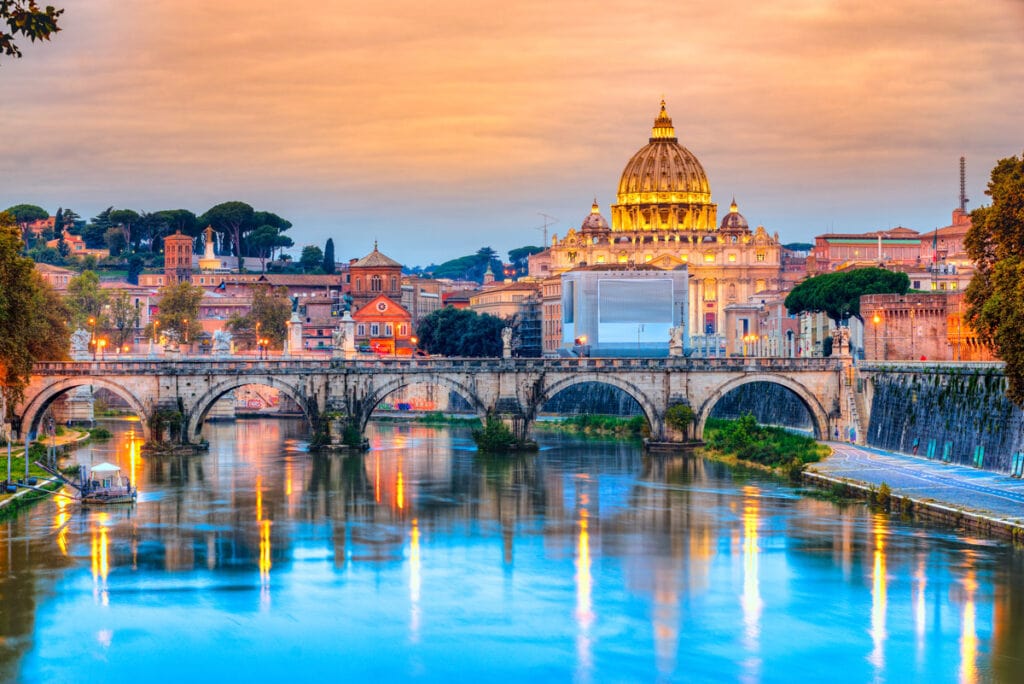
Some links on this page may be affiliate links. If you click an affiliate link and make a purchase, we may receive a small commission, at no extra cost to you. For more details, refer to our disclosure.
You’ll see (and feel!) Rome’s history all around you as you explore the atmospheric historic center, a UNESCO World Heritage Site.
From the gawkworthy Colosseum and the majestic Pantheon to the impressive Basilica di San Pietro in Vatican City, many landmarks in Rome are bucket-list destinations.
There are so many things to do in Rome, and so many sights to visit, that planning a first visit can seem somewhat overwhelming. That’s why we’ve put together this detailed day-by-day guide to 3 days in Rome!
We’ll take you step by step through the must-visit sights in Rome, plus offer suggestions on where to stay and eat.
Ready to discover the best things to do in Rome in 3 days? Let’s get started discovering the ultimate 3 days in Rome itinerary for your first visit!
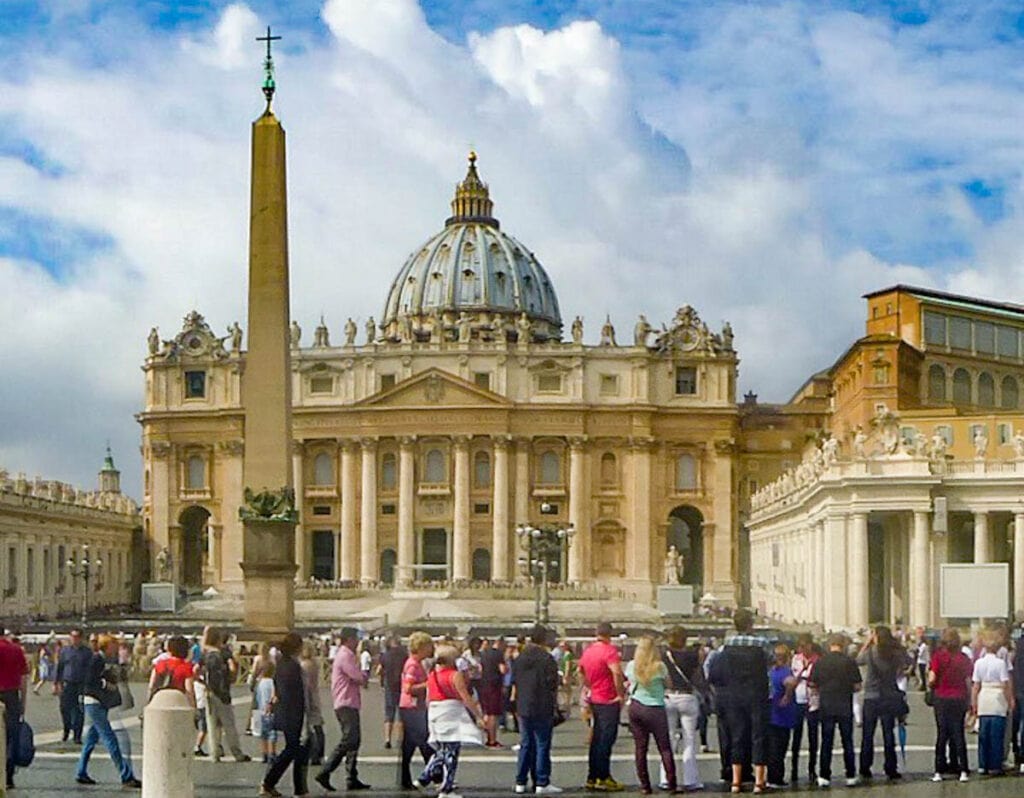
IN THIS ARTICLE…
The Best 3 Days in Rome Itinerary
With More Time in Rome
Getting to Rome
Getting Around in Rome
Where to Stay in Rome
The Best Time to Visit Rome
The Ultimate 3-Day Itinerary for Rome
Day 1 of your 3 Days in Rome
There is a lot to see and do in Rome, so on this action-packed itinerary, you’ll dive right into some major attractions on your first day in the city.
You’ll spend a fair bit of the day soaking in the history at the monuments of Ancient Rome, starting with the awe-inspiring Colosseum.
Later in the day you’ll head over to Trastevere, one of Rome’s most charming neighborhoods that is also known for its vibrant nightlife.
Visit the Colosseum!
Every first-time visitor to Rome has the Colosseum at the top of their bucket list. It is one of the most popular attractions in the world!
The Colosseum was inaugurated almost 2,000 years ago in the year 80 A.D.
It was the largest ancient amphitheater when it was built, and, incredibly, it is still the largest standing amphitheater on the planet.
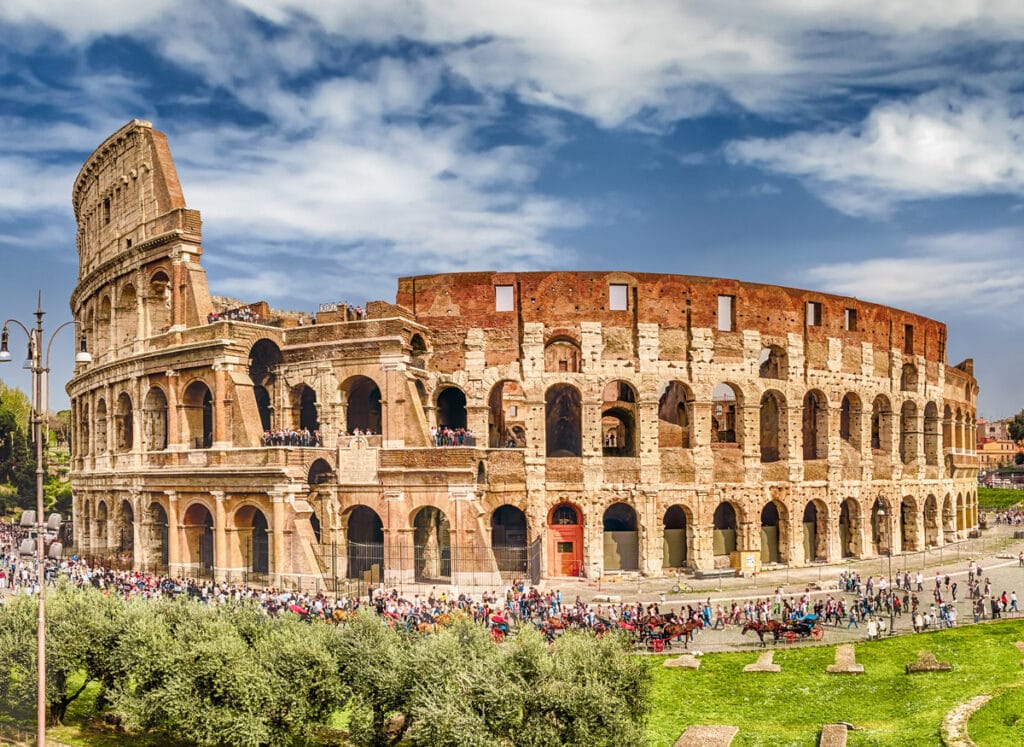
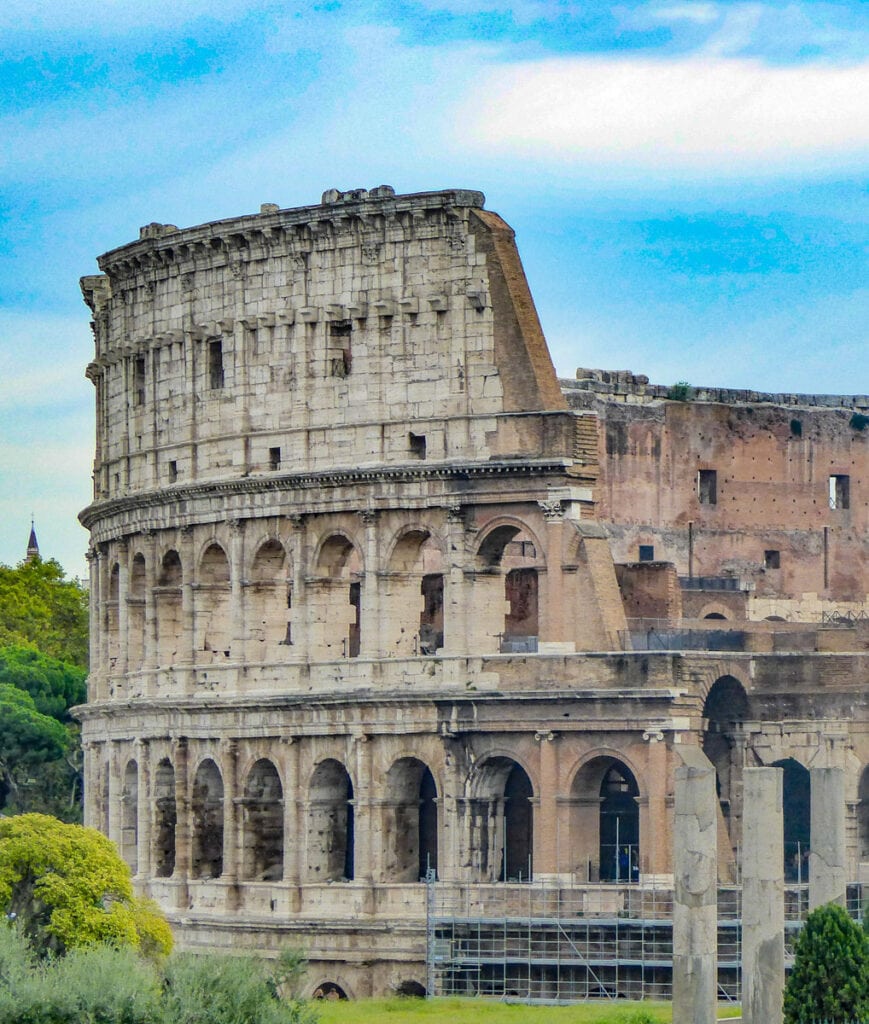
At maximum capacity, it could hold more than 50,000 spectators.
Rome’s most iconic landmark, the impressive structure is remarkably well preserved considering its age.
During the days of the Roman Empire, the Colosseum was used for games and gory spectacles. Wild beasts were hunted and gladiators engaged in combat.
In the late 6th century, the Colosseum stopped being an entertainment venue for Romans.
Since then, the Colosseum has been a castle, a church, a cemetery, and a warehouse. It’s also survived some major catastrophes, including World War II bombings, looting, and even earthquakes.
One of the Seven Wonders of the World, the Colosseum is the most visited attraction in Italy and receives several million visitors each year.
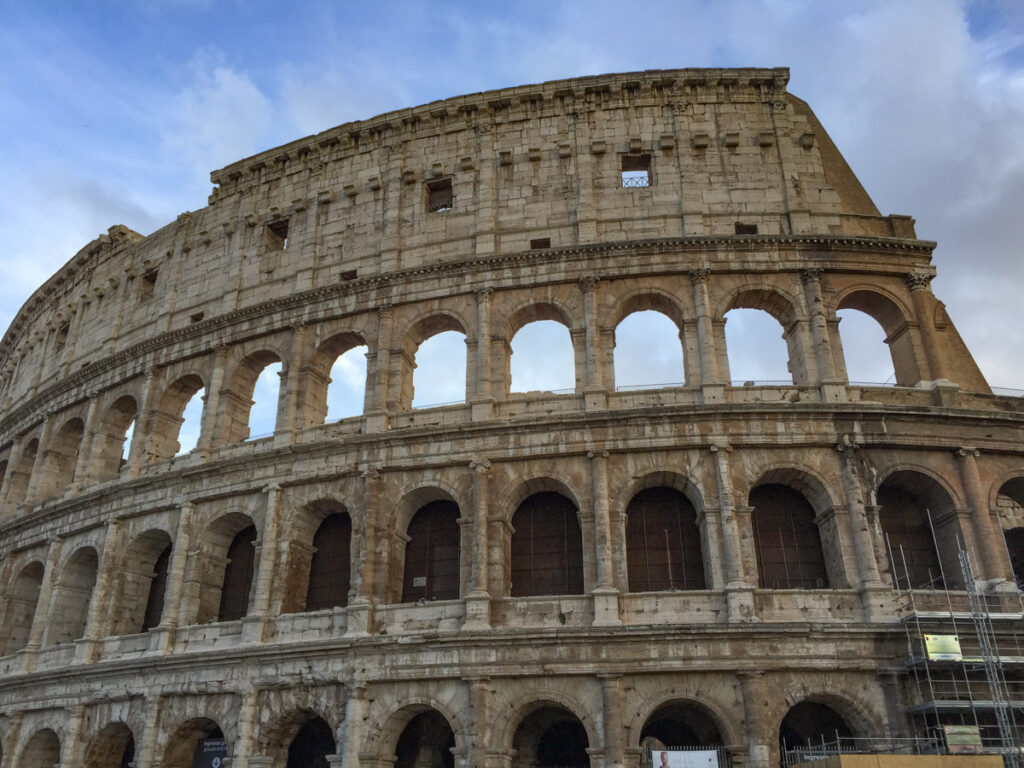
Given that the Colosseum is an insanely popular attraction, you must plan your visit in advance, whether it’s buying tickets or booking a tour. When you buy tickets, you’ll select a time slot.
We suggest a guided tour for your first visit to the Colosseum, because you’ll “see” more with a good guide and have a richer experience than exploring on your own.
And if tickets for your planned visit date are sold out online, booking a guided tour is the way to still get to see the inside of the Colosseum.
For hours of operation and to buy tickets, click here. In addition to the basic ticket (which also includes the Roman Forum and Palatine Hill), you can also add on access to the Arena of the Colosseum (you’ll stand where games were once held!) or the Arena plus the Underground (the passages under the structure).
You can also choose a guided tour that includes the Arena and the Underground.
>> Check price and availability for a guided tour of the Colosseum, Forum, and Palatine Hill now!
Tour the Roman Forum
Go way back in time with a walk through the historic Forum Romano, the political and religious heart of ancient Rome.
The Forum is nestled on low ground between the Capitoline and Palatine hills. In addition to the more significant structures, the area housed markets and shops.
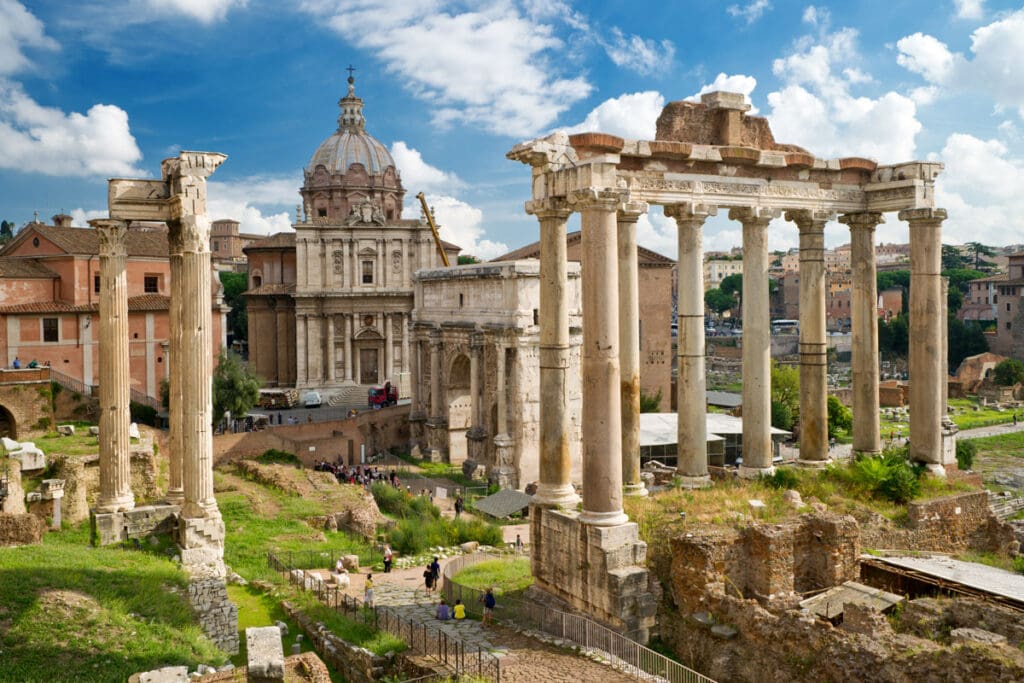
Visiting the sprawling site today means tracing the footsteps of Roman notaries, including Julius Caesar.
Things to see here include the Arco di Settimio Severo and the Arco di Tito, the Curia, and the Tempio di Saturno.
You’ll arrive at the Roman Forum via the Via Sacra, one of the oldest roads in Rome.
Your ticket to the Colosseum includes entrance to the Roman Forum, and a guided tour of the Colosseum also includes the Roman Forum (and Palatine Hill).
Take in the Views from Palatine Hill
One of the seven hills on which Rome was built, Palatine Hill is today an archaeological park.
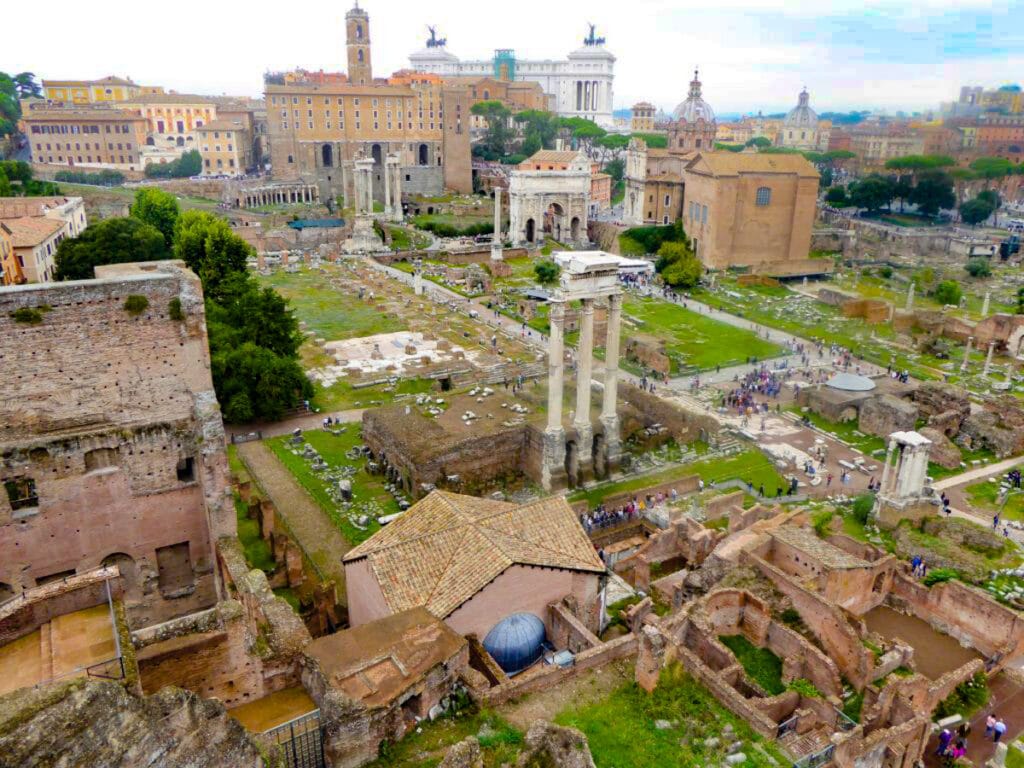
In fact, legend has it that it was on Palatine Hill that Romulus founded Rome.
Later, the hill served as the location for the palaces of important Romans such as Domitian, Augustus, and Tiberius.
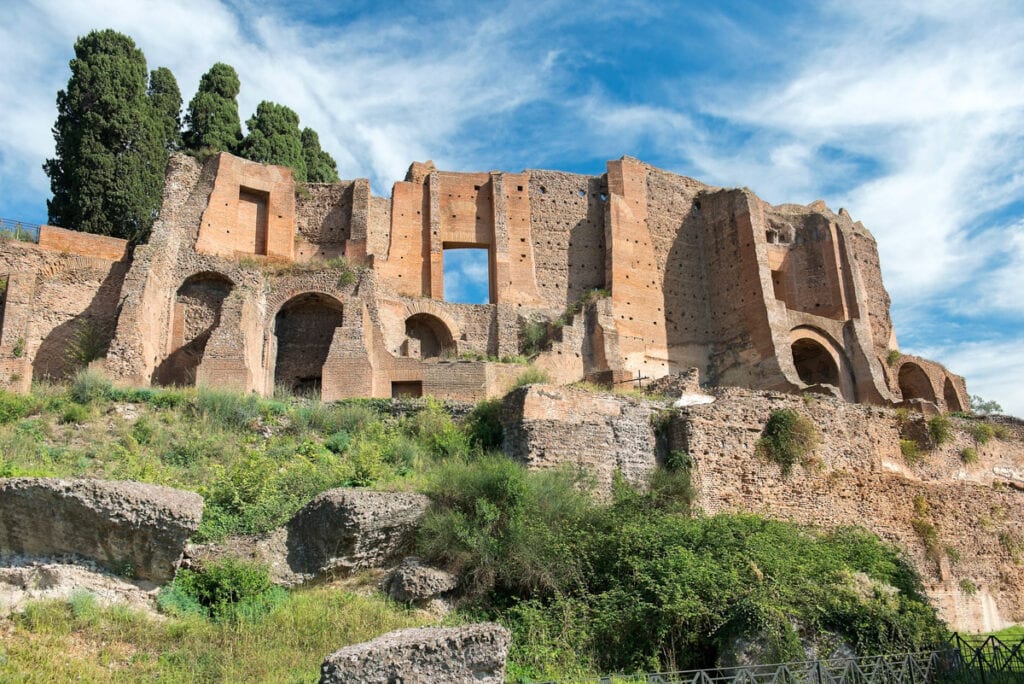
Along with the Colosseum and the Roman Forum, Palatine Hill is considered one of the essential sights of Ancient Rome.
On the northern side of the hill you’ll see two pavilions that were part of the Farnese Gardens, the first private botanical gardens in Europe.
The gardens have been replanted and you can stroll the quiet paths. The rose garden is pretty when in bloom!
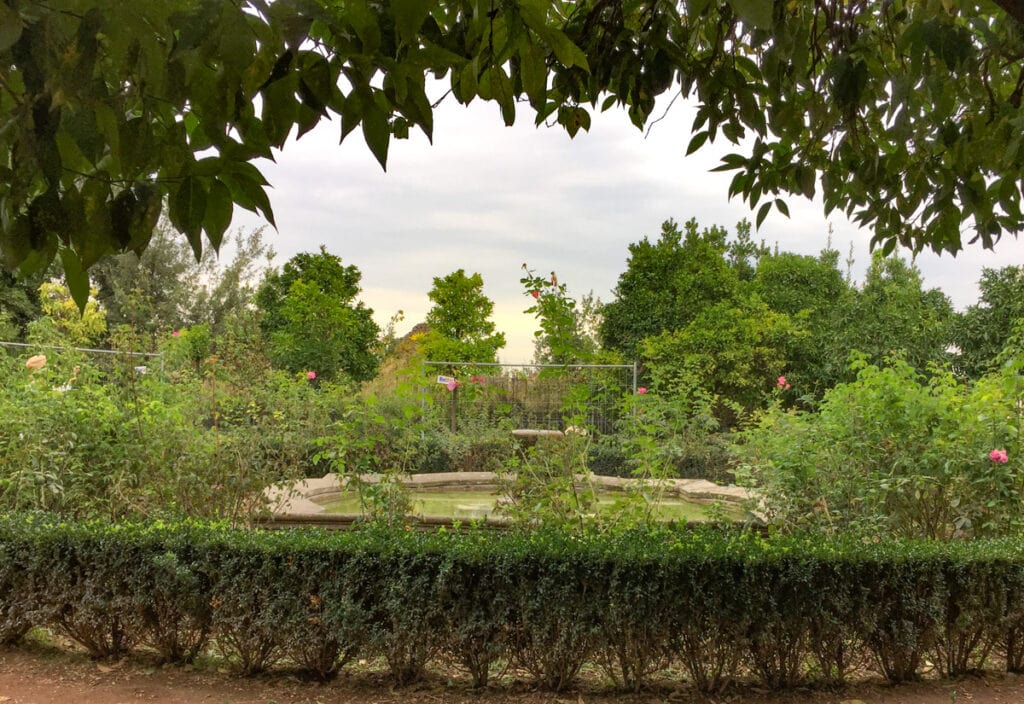
From the viewing platform, you get a spectacular view over the Forum and beyond.
Your visit to Palatine Hill is covered by the combination ticket for the Colosseum complex.
If you booked a guided tour, it will include a tour of Palatine Hill.
Stroll the Via dei Fori Imperiali
Have lunch before you begin the next phase of your sightseeing: we suggest Ai Tre Scalini or La Taverna dei Fori Imperiali, both of which are nearby.
Now you are ready to stroll the Via dei Fori Imperiali!
Running between the Colosseum and Piazza Venezia, the Via dei Fori Imperiali is a straight road in central Rome.
It’s a pretty momentous place, as you can see the remains of the Forum of Augustus, Forum of Nerva, and the Forum of Trajan on the two sides of the thoroughfare.
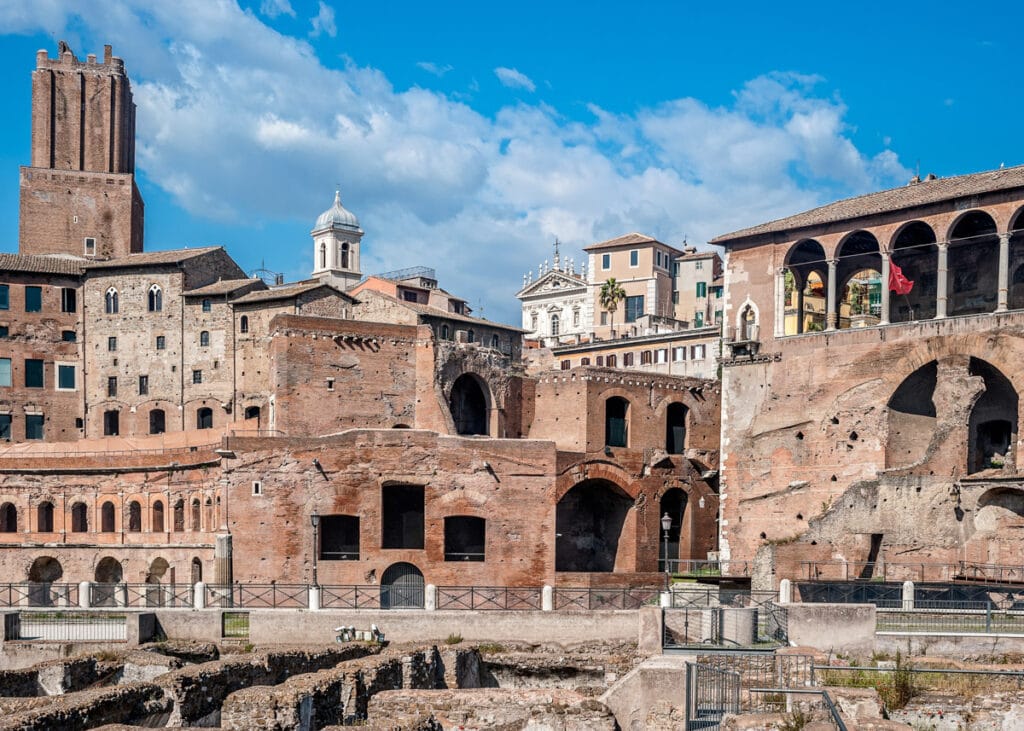
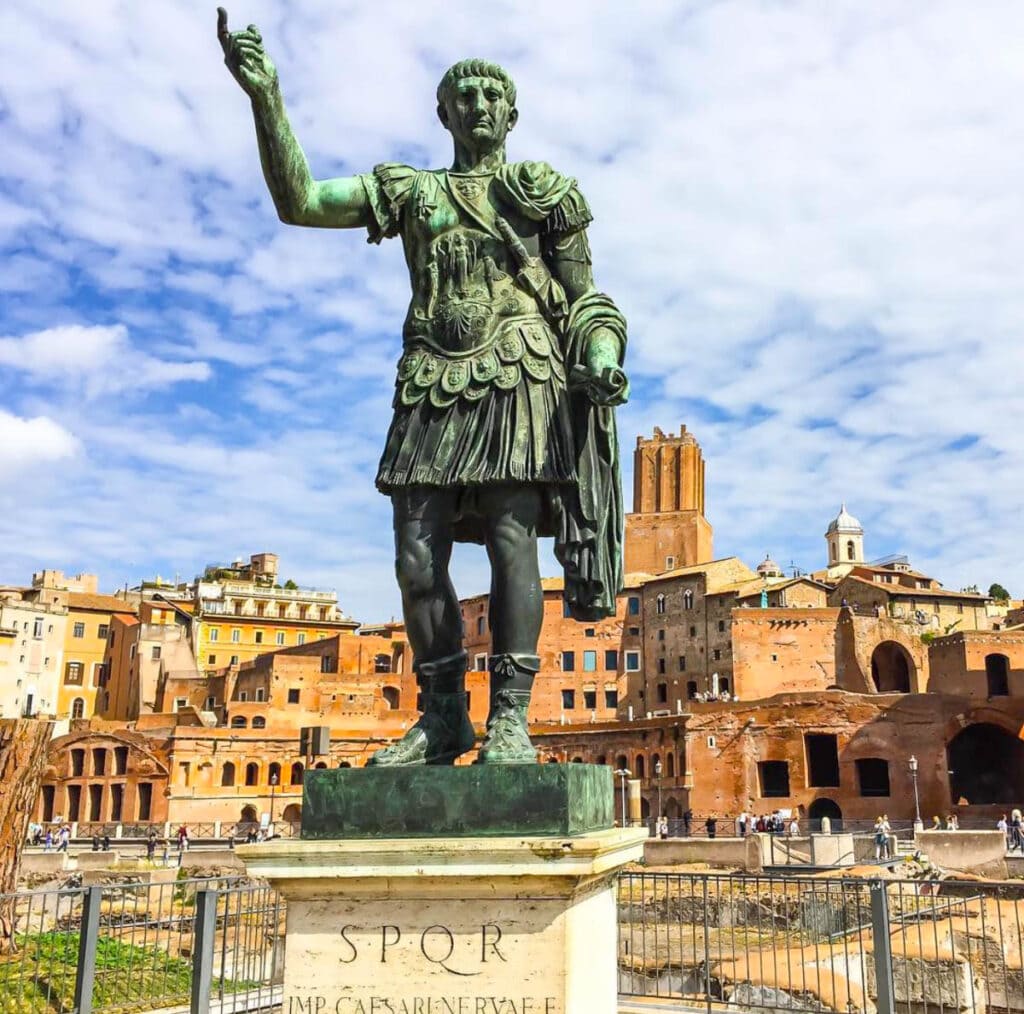
Strolling along this street is a journey filled with wonder — and of course, photo opportunities aplenty. It also provides a practical way to get from the Colosseum to Piazza Venezia.
At the Piazza Venezia, pause to admire the architecture and take in the lively ambience.
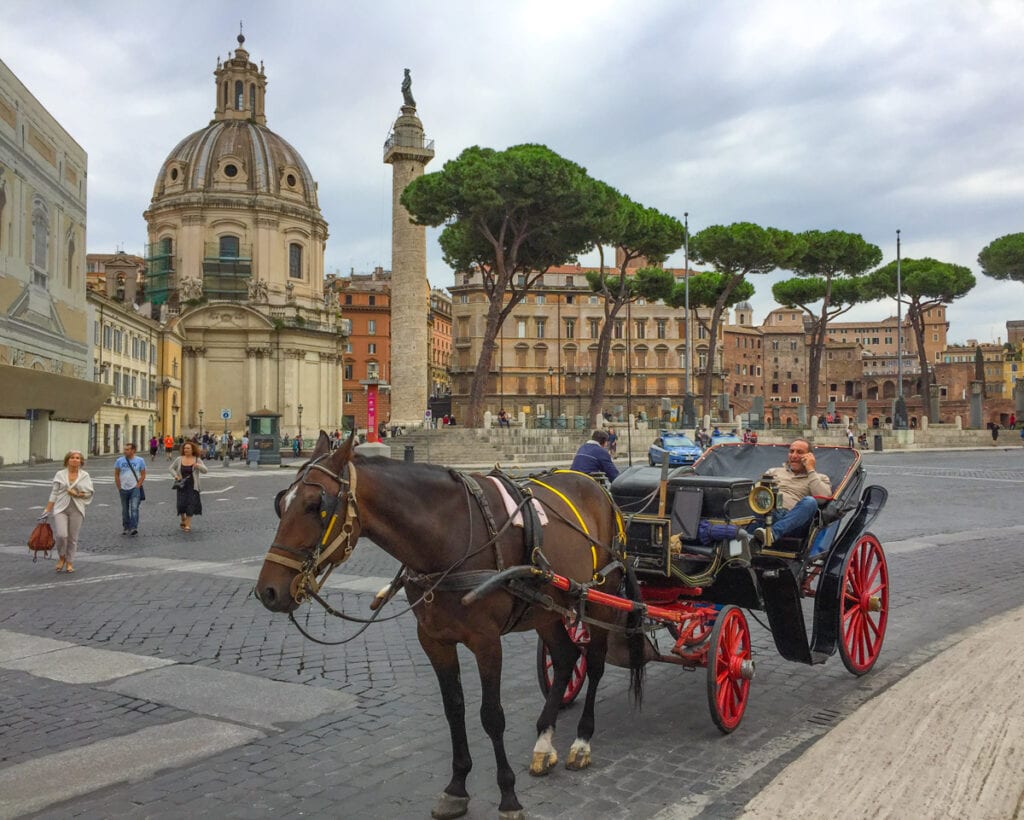
Here you’ll find the Palazzo Venezia, and the Basilica San Marco Evangelista in the Piazza San Marco, and the Altar of the Fatherland, which you’ll visit later.
Visit the Capitoline Museums (and Square!)
Just a short walk from the Piazza Venezia, on top of Capitoline Hill, is the Piazza del Campidoglio, or Capitoline Square.
Here you will find the Capitoline Museums, with a notable collection of art and archaeological artifacts.
Many items date back to Ancient Rome, but you’ll also find medieval and Renaissance era exhibits.
Look for the emblematic bronze statue of the she-wolf nursing Remus and Romulus!
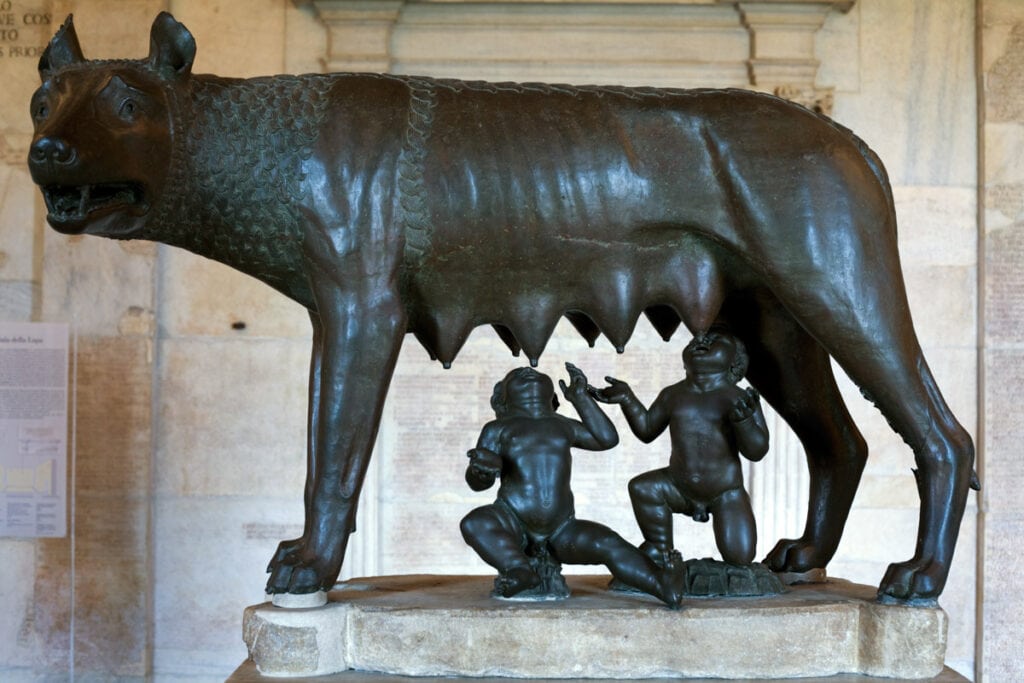
The museums are housed in a pair of old Roman palazzi, which are connected via a subterranean tunnel.
If you are a history or museum buff, consider splurging on a private tour of the Capitoline Museums. We took this tour on our second visit to Rome and thought it was the highlight of our trip. Our guide was phenomenal.
Designed by Michelangelo, the square itself is also well worth admiring. The pavement has a beautiful design, with a 12-pointed star at the center.
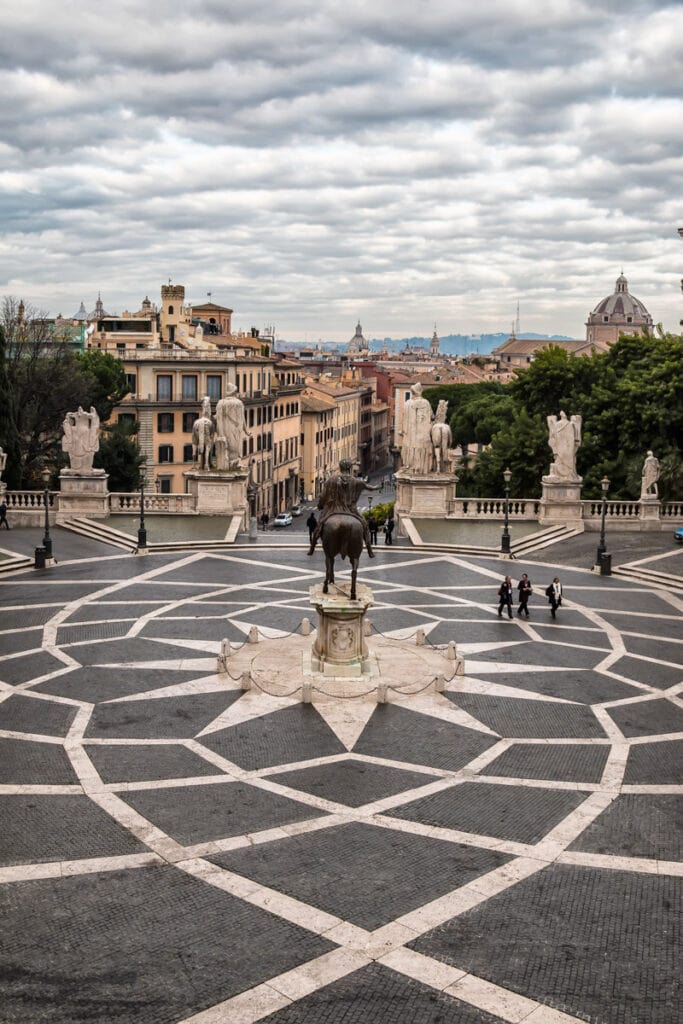
Plus, its position atop one of the city’s seven hills makes for magnificent views, and you can see several city landmarks from here.
Admire the Monumento Vittorio Emmanuele II
The Victor Emmanuel II National Monument, also known as the Altare della Patria (Altar of the Fatherland) was constructed in honor of a unified Italy’s first king.
The monument was opened in 1935, making it one of Rome’s more modern sights.
With its Corinthian columns and horse-drawn chariots, it dominates the Piazza Venezia.
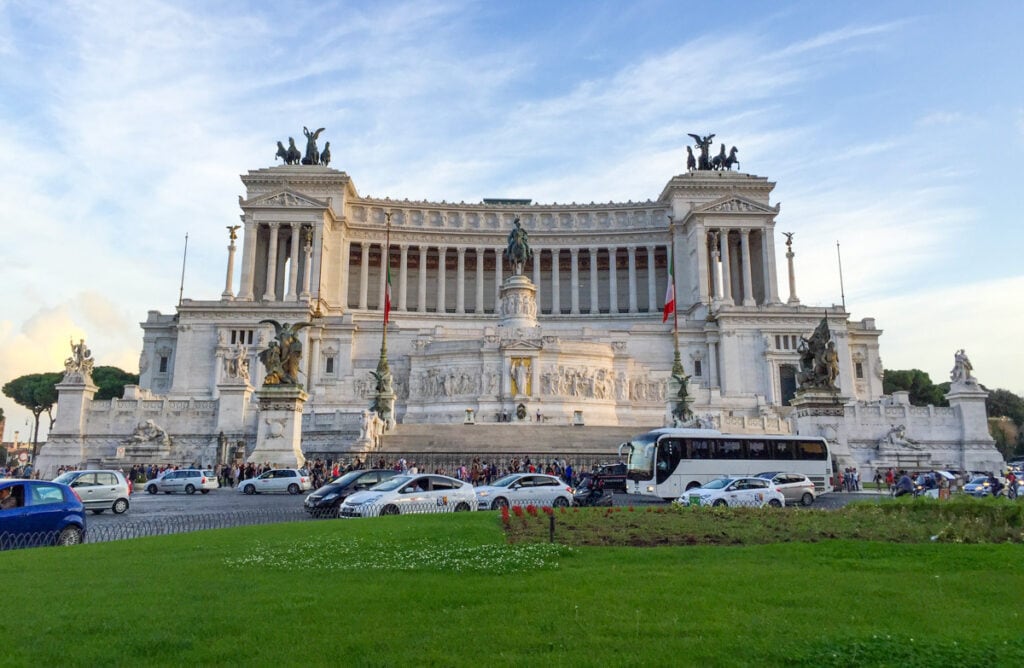
Due to the imposing white facade, it’s sometimes also known as “the Wedding Cake.” Much of the white marble used here comes from the Brescia region of Italy.
See the Tomb of the Unknown Soldier, and admire the equestrian statue of King Vittorio Emanuele II.
Best of all, take in the views from the terraces. While the views from the roof are epic, the views from the lower terraces are also lovely.
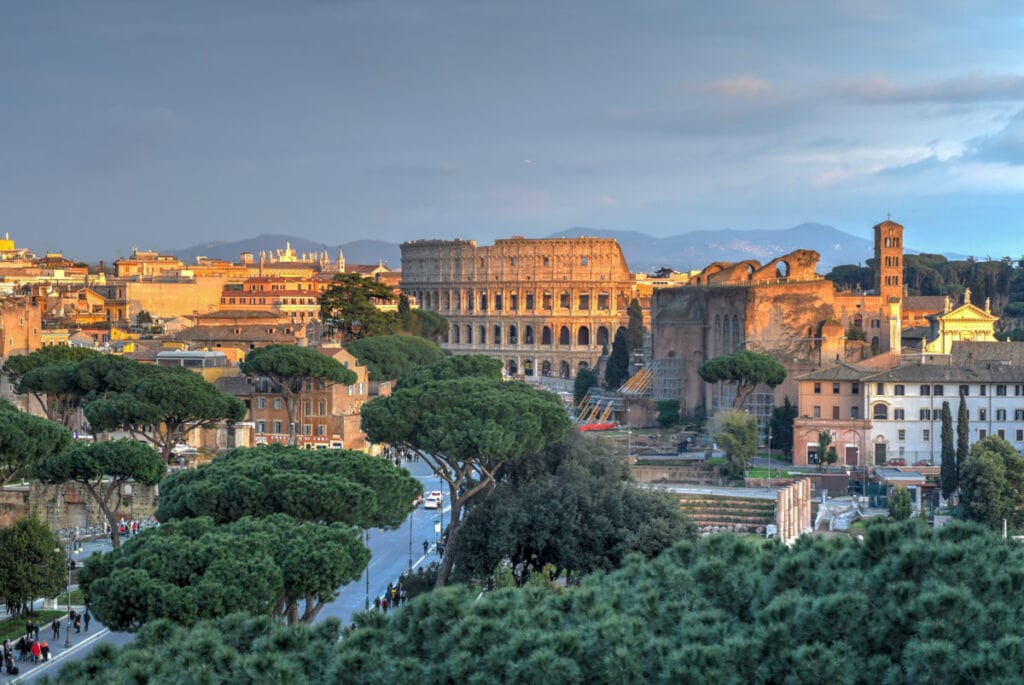
Other than a fee for the optional elevator to the roof, entry to the Altare della Patria is free.
Wander the Alleys of Trastevere
Hugging the banks of the River Tiber, Trastevere is an attractive area with something of an alternative vibe.
The neighborhood is popular with tourists and locals alike, and its largely traffic-free streets are packed with character.
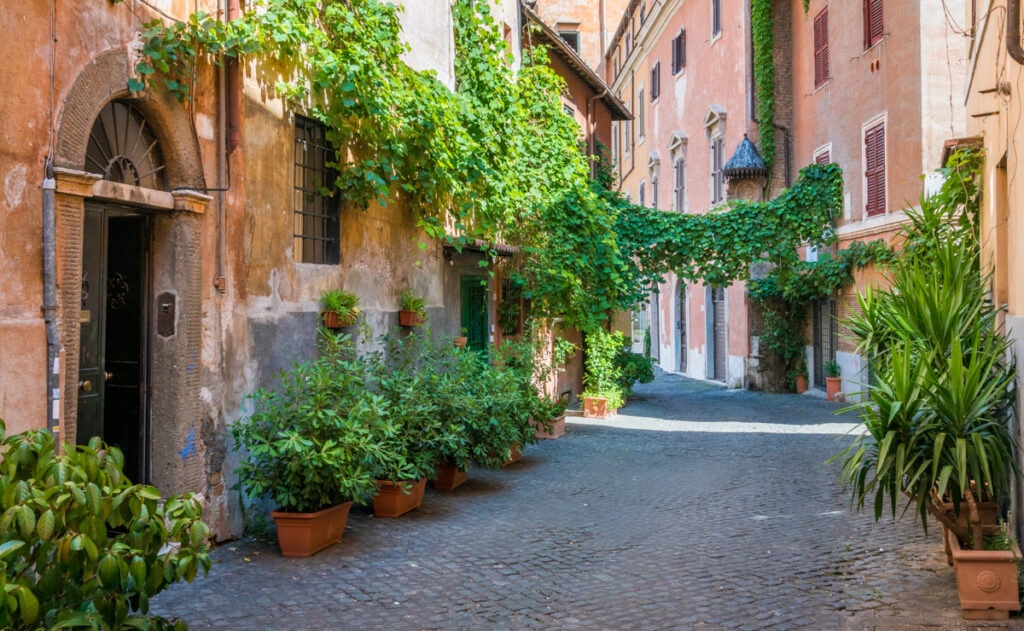
In Trastevere, you can find stylish yet affordable accommodation, traditional trattorias, vibrant bars serving craft beer, unique boutiques, and more.
Snap a photo of the historic Ponte Sisto, step inside the gorgeous Basilica of Santa Maria and the Basilica of Santa Cecilia, and just wander the streets, soaking in the atmosphere.
Each evening, the archetypal Italian promenade, or passeggiata, centers on Piazza Santa Maria and Piazza di San Calisto.
A guided walking and food tour of Trastevere is a fabulous way to end your first day in Rome.
This highly rated food tour of Trastevere gets more than 1,000 5-star reviews on Viator! Book early to get the evening option.
>> Check price and availability on a food and walking tour of Trastevere!
Afterwards, enjoy drinks at a local bar (Freni e Frizioni gets great reviews!) before heading back to your accommodations.
Day 2 of Your 3-Day Rome Itinerary
Today you’ll spend the morning in Vatican City, admiring the superlative art at the Vatican Museums and discovering the treasures of the Basilica di San Pietro.
In the afternoon, you’ll walk the historic center of Rome, taking in the many wonderful sights along the way.
The historic center of Rome is a UNESCO World Heritage Site.
Tour the Vatican Museums
The Vatican Museums house some of the most significant collections of art you can see anywhere in the world.
Accumulated since the 1600s, the collections include some renowned Renaissance masterpieces and important Roman sculptures.
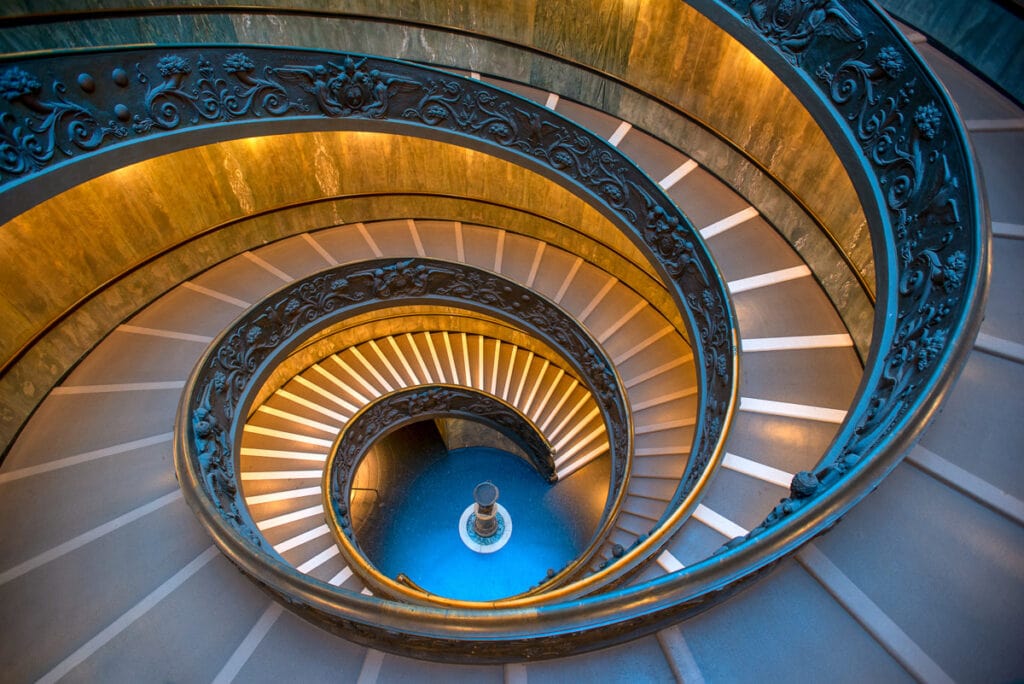
The Musei Vaticani are the second-most popular art depositories on the planet, after the Louvre in Paris.
The Sistine Chapel, home to Michelangelo’s famous High Renaissance ceiling fresco, is of course at the top of most visitors’ must-sees here. He also painted the Last Judgment fresco over the altar.
Do not miss the Spiral Staircase, the Raphael Rooms (his School of Athens is a bucket list item for many visitors), and the stunning ceiling of the Hall of Maps!
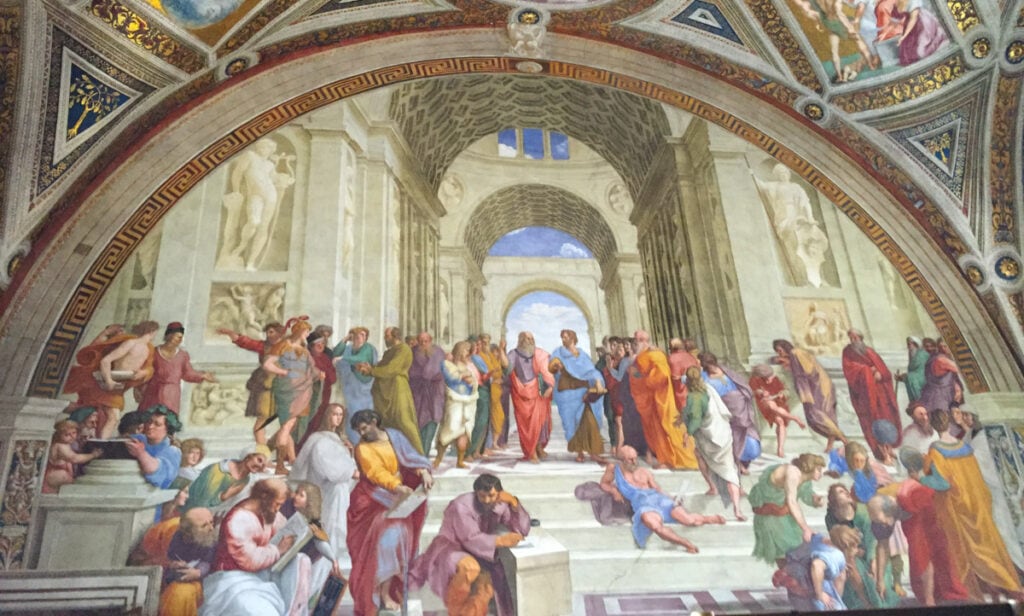
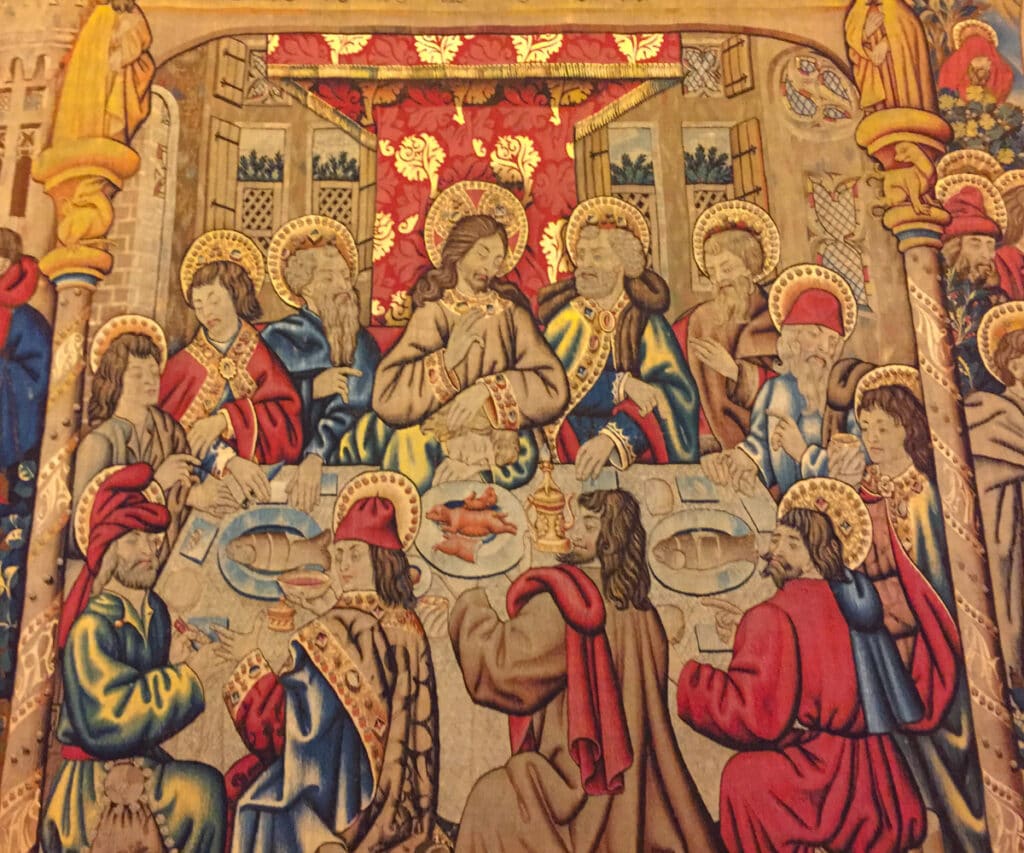
The Pinecone Courtyard is also lovely, with the modern and much-photographed sphere sculpture. And do not miss the Apollo Belvedere and the Laocoön sculpture in the Octagonal Courtyard.
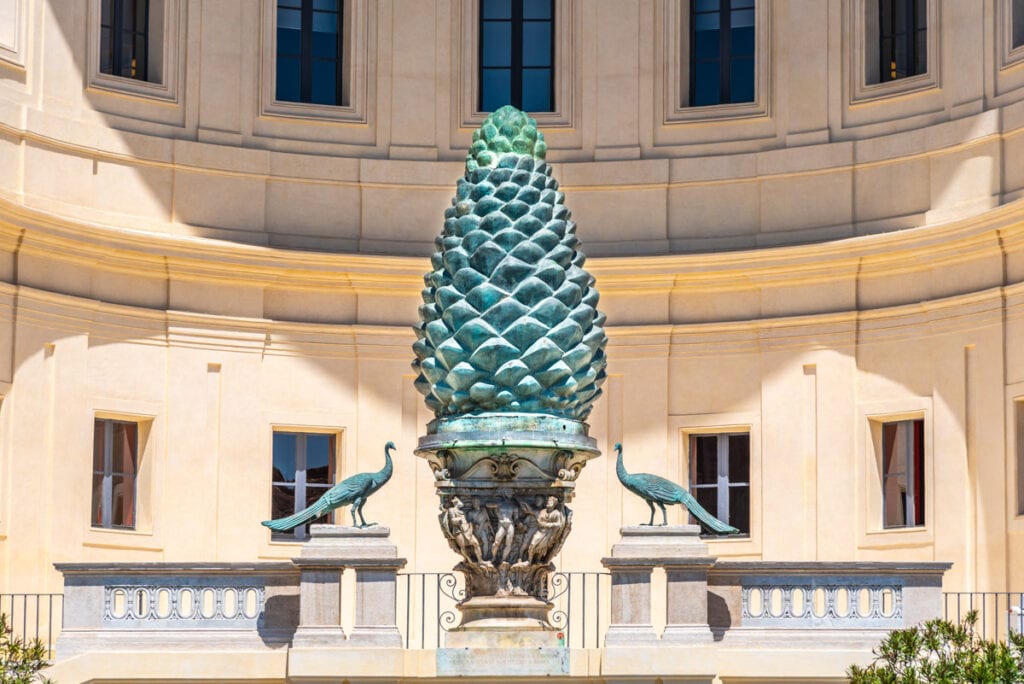
Visitors can also enjoy the Italian sunshine while exploring the Vatican Gardens and Pontifical Villas and Gardens.
Unless you are an art or art history expert, you’ll want to take a guided tour of the Vatican Museums on your first visit.
Your guide will efficiently steer you through the most unmissable areas of the museums and offer insightful commentary on what you are seeing.
This popular small-group tour combines the Vatican Museums with the Basilica di San Pietro with priority entrance.
>> Check pricing and availability for this guided tour of the Vatican Museums + Saint Peter’s now!
On our first visit we took an early morning tour that came with access to the Sistine Chapel before it opens to the public and is capped at 6 people. Well worth it!
>> Book this early morning tour of the Vatican Museums now!
If you prefer to explore the Vatican Museums on your own, book tickets on the official website well ahead of your visit!
If tickets are sold out for the date of your planned visit you can try booking online at a reseller like GetYourGuide, or join a guided tour.
>> Get tickets for the Vatican Museums and the Sistine Chapel now!
Be Enthralled by the Basilica of Saint Peter
Saint Peter’s is a magnificent church, arguably the world’s most acclaimed work of Renaissance architecture.
Situated within Vatican City, the Basilica of Saint Peter is considered one of the most holy Catholic sites in the world.
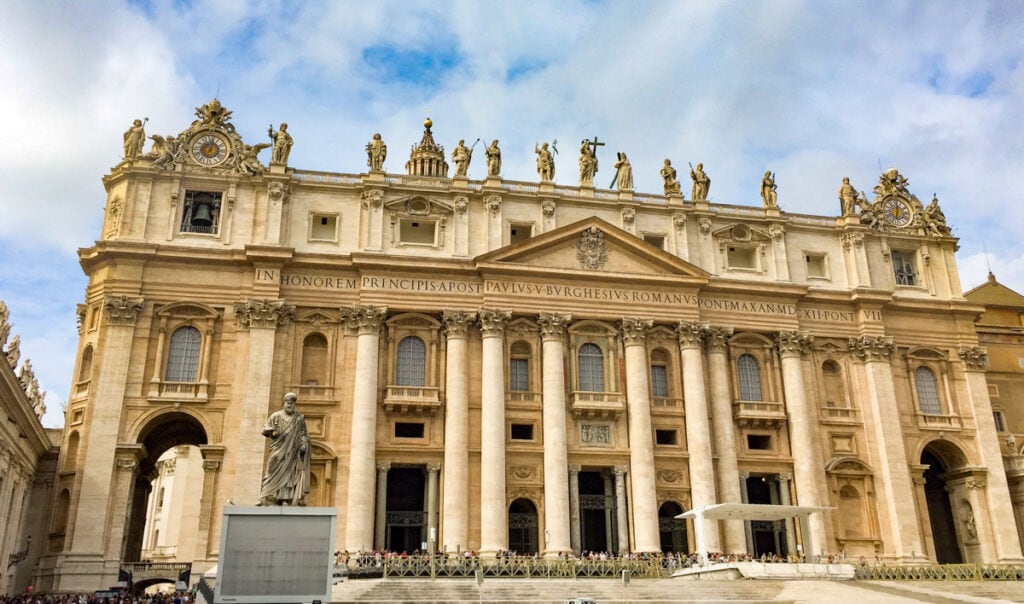
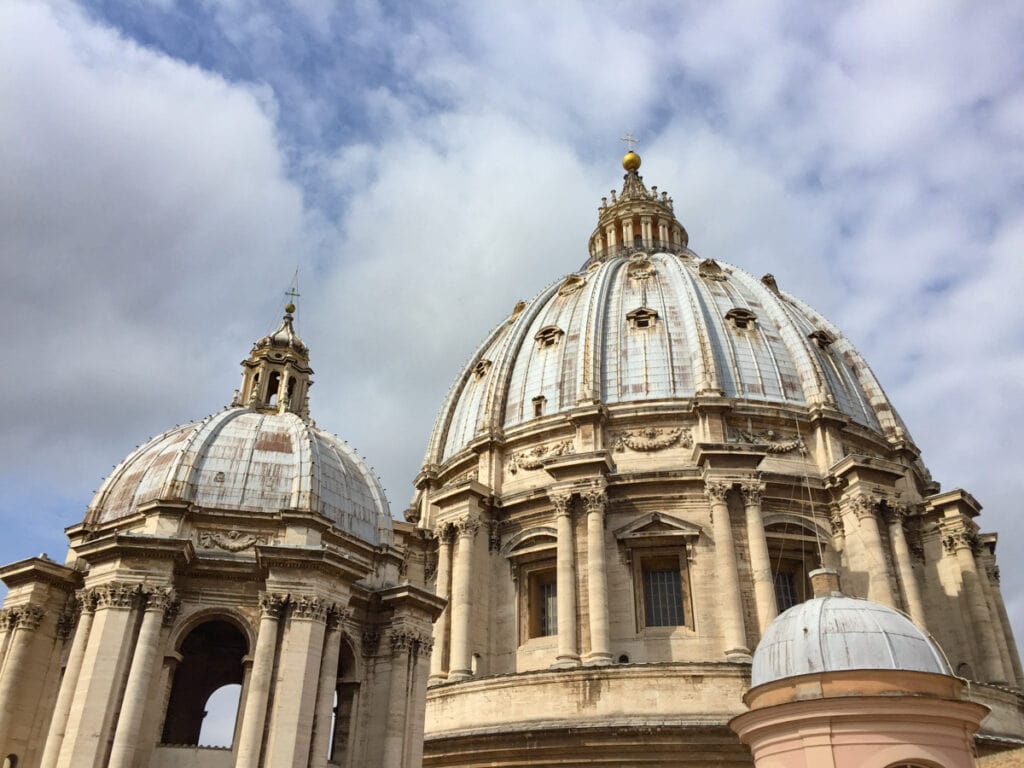
The interior of the basilica is breathtaking, with numerous treasures to admire, from the gleaming decorated ceiling to the massive pillars and the many sculptures and paintings.
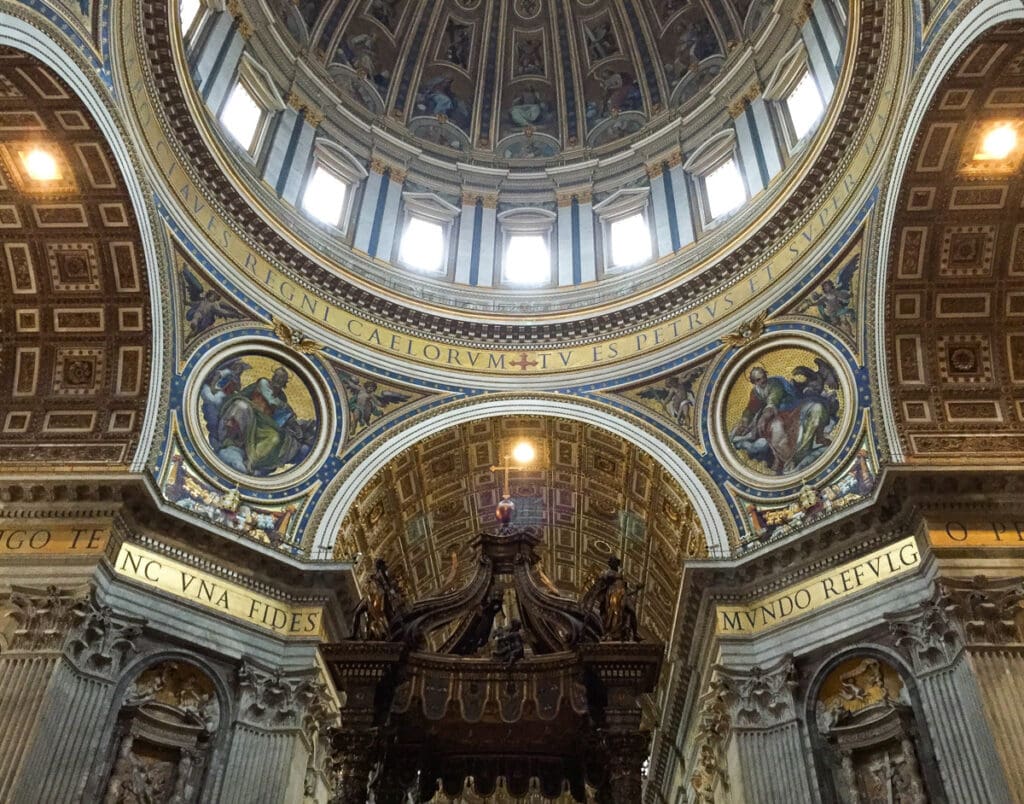
Gian Lorenzo Bernini’s impressive bronze baldachin stands over the tomb of Saint Peter. Above the altar in the apse is the chair of Saint Peter.
The Pietà by Michelangelo, carved from a single block of marble, is another must-see here, as is the black statue of Saint Peter by Arnolfo di Cambio: pilgrims over the centuries have worn the right foot by kissing it in reverence.
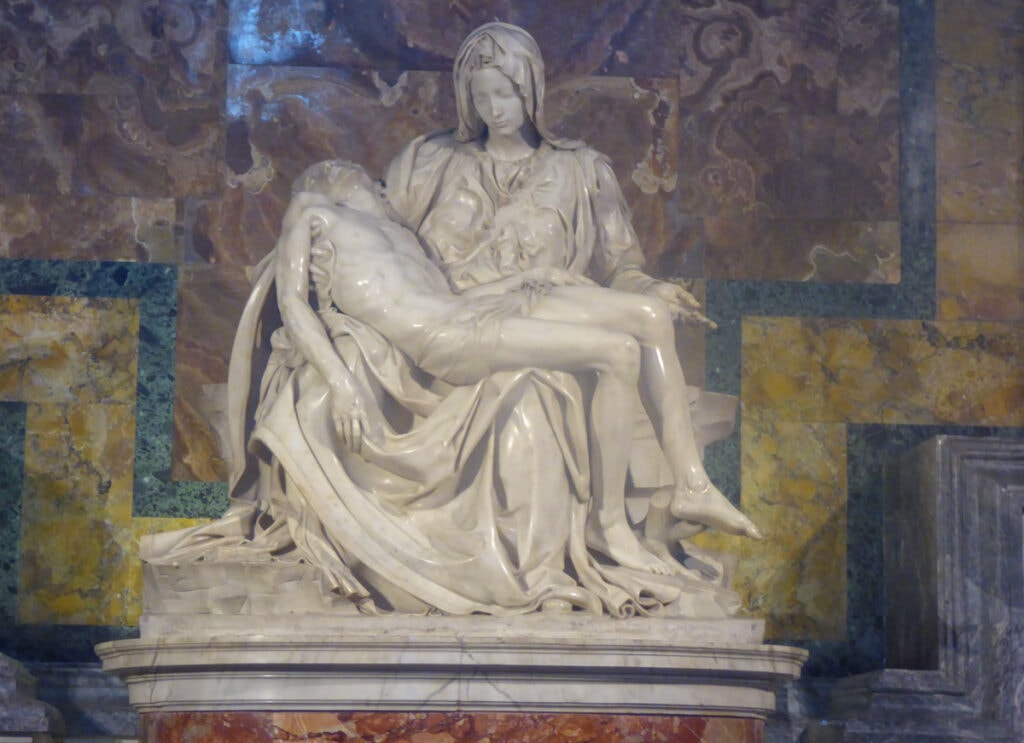
The Basilica of Saint Peter is free to visit but lines are generally VERY long during the day so you will want to arrive really early.
Note that if the Pope is in Vatican City and a papal audience is going to occur on the Wednesday morning, Saint Peter’s is closed to visits during that time.
Guided tours of the Vatican usually include a visit to Saint Peter’s and a tour is an efficient way to visit on your 3 days in Rome.
>> Check pricing and availability for this guided tour of Saint Peter’s + the Vatican Museums now!
Gawk at the Views from the Dome of Saint Peter’s
One of the most epic things to do in your 3 days in Rome is the climb to the top of the dome of Saint Peter’s Basilica in Vatican City.
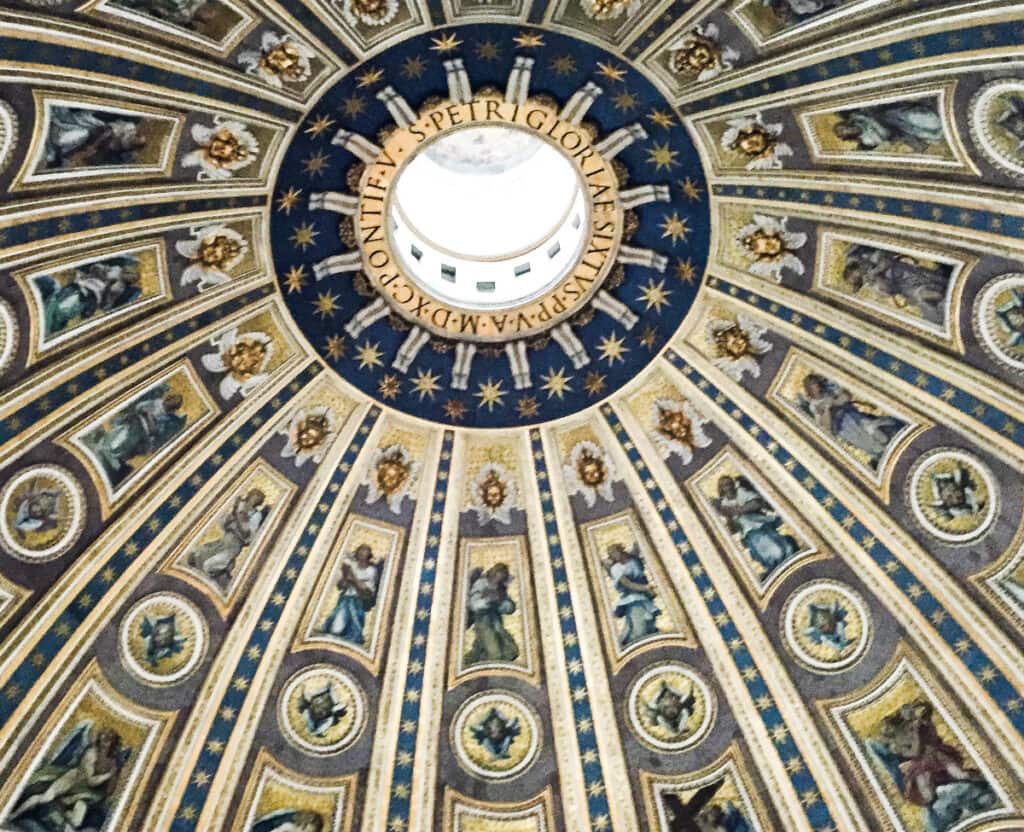
The 360-degree panoramas from the viewing gallery at the top are some of the best views of the city of Rome you can get.
The view over Saint Peter’s Square is especially iconic, but also take the time to look down upon the gardens of the Vatican and other areas of Rome.
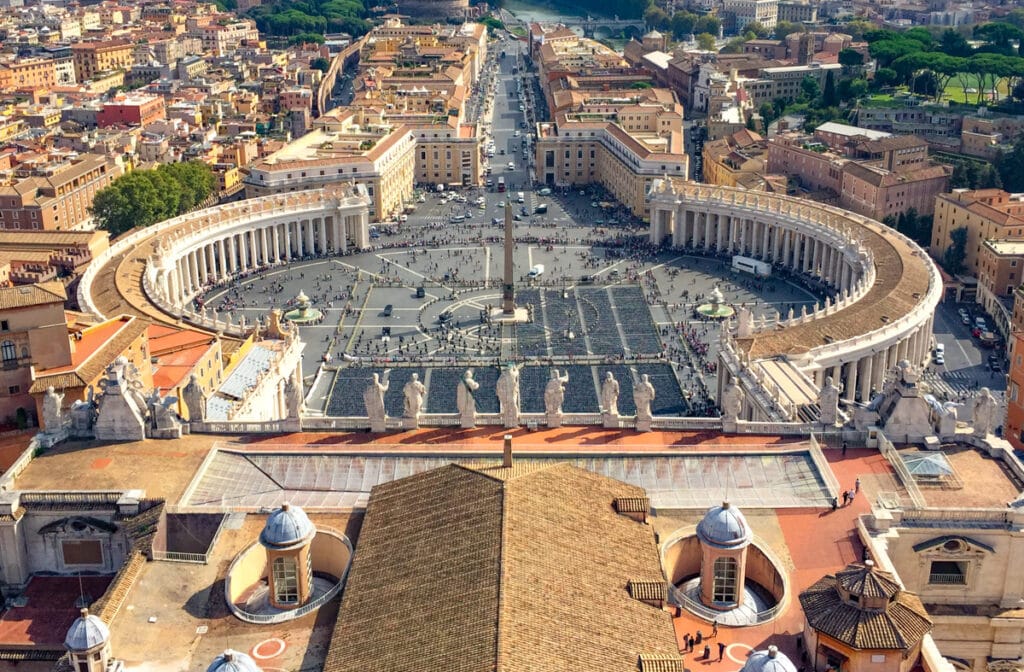
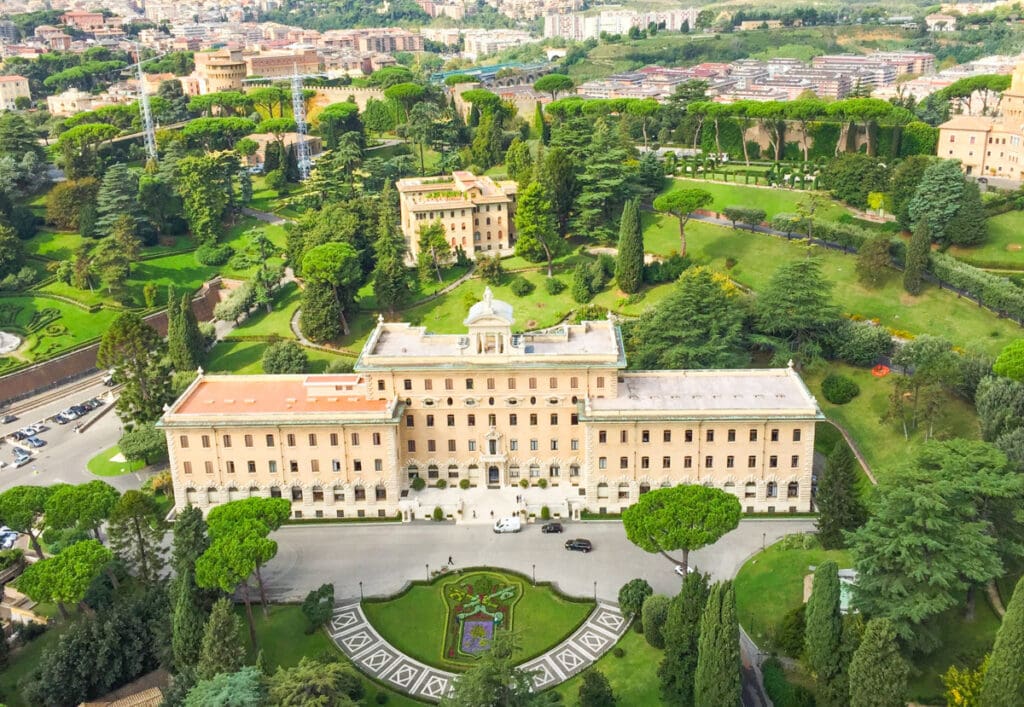
The dome was designed by Michelangelo, but it was completed after his death by Giacomo della Porta.
There is a fee to climb the dome. If you joined a guided tour, you will usually separate from the group here and join the line to pay and climb the cupola.
There are 551 steps to the viewing area, but you can bypass 231 steps by taking an elevator for a small upcharge.
Stroll Saint Peter’s Square
Complete your visit to the Vatican complex with a stroll of the iconic Saint Peter’s Square.
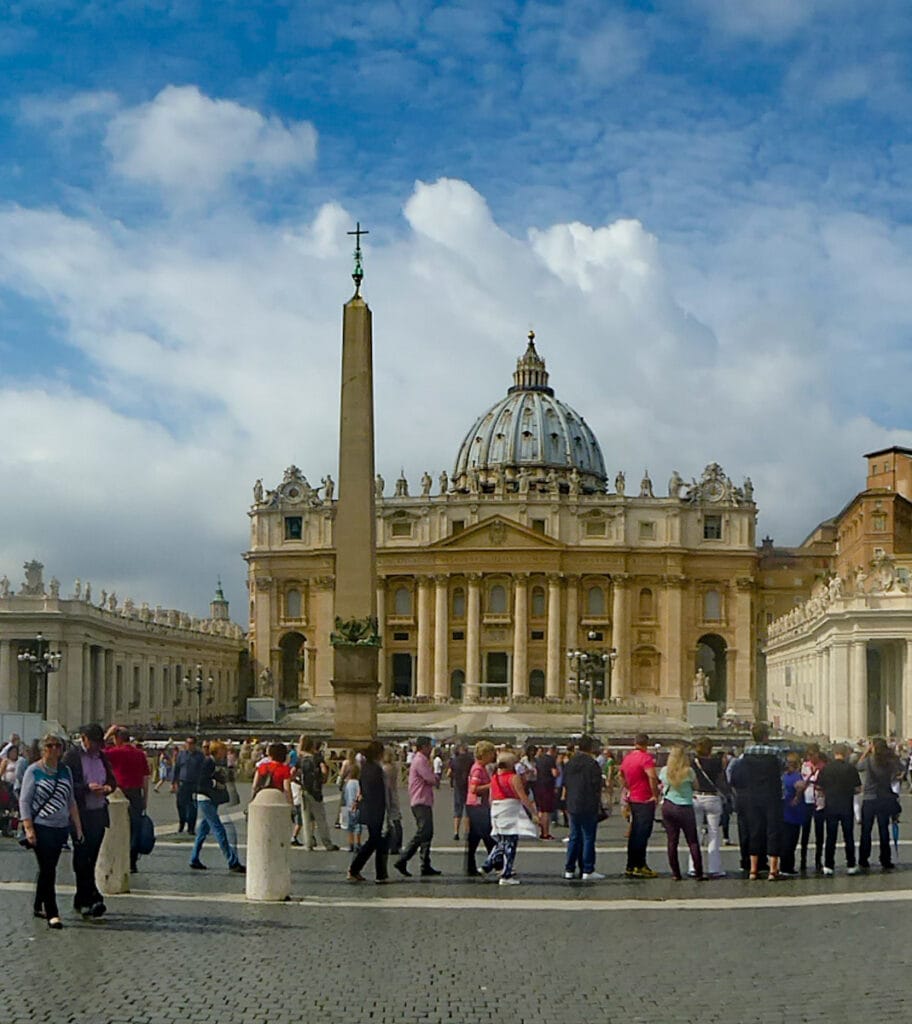
Designed by Bernini, the square is enormous and features 284 columns along its periphery. Statues of saints adorn the roof over the colonnades.
In the center of the square is an obelisk that was brought to Rome from Egypt. (You will find many Egyptian obelisks in Rome!)
Two fountains adorn the square: one created by Bernini and the other by Carlo Maderno.
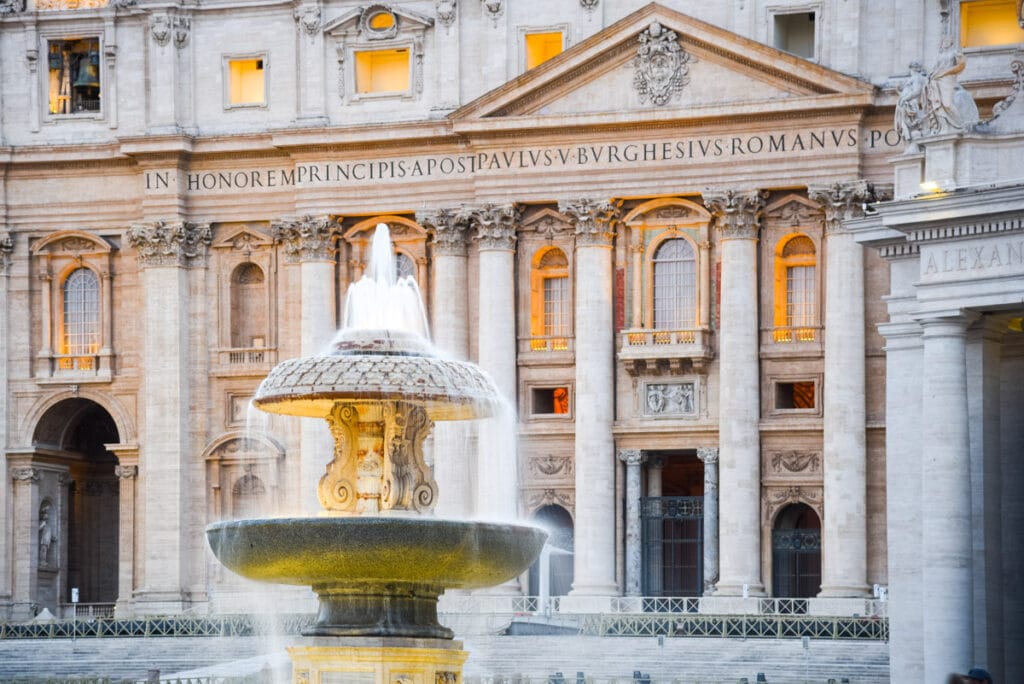
Stop by the Castel Sant’Angelo
En route to the historic center of Rome, stop to visit the Castel Sant’Angelo.
Also known as the Mausoleum of Hadrian, Castel Sant’Angelo was first commissioned by the Roman Emperor Hadrian in 135 A.D.
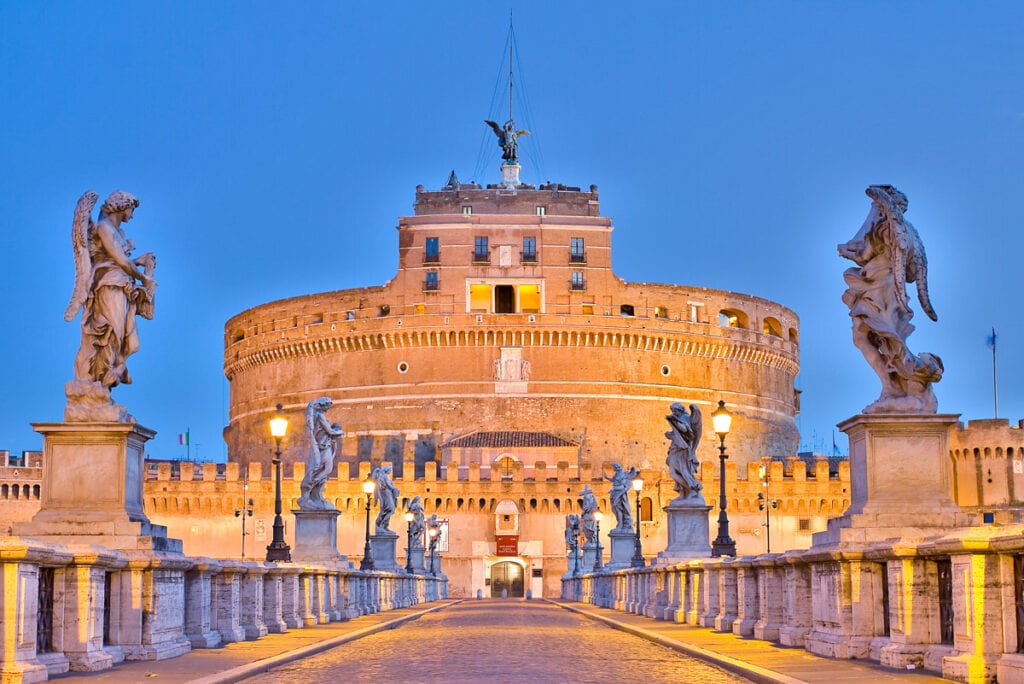
A dramatic cylindrical building located in Parco Adriano, right by the banks of the River Tiber, Castel Sant’Angelo makes for great photos, especially when lit up at night.
At the top of the structure is a statue of the Archangel Michael, in the act of sheathing his sword.
The castle is now a museum with significant Renaissance and Baroque artworks. The upper terrace offers panoramic views over the city of Rome and Vatican City.
Ponte Sant’Angelo makes for a lovely walk. The sides are adorned with statues of angels, made by Bernini’s students.
>> Get skip-the-line entrance tickets to Castel Sant’Angelo!
Explore the Piazza del Popolo
From Castel Sant’Angelo, cross the River Tiber and walk to the Piazza del Popolo to begin your stroll through Rome’s center.
Dal Bolognese is a great place to have lunch, before you begin your exploration of the heart of Rome.
The Piazza del Popolo is named for the Church of Santa Maria del Popolo.
At this lovely church, you can see a duo of masterpieces by Caravaggio, Raphael’s Chigi Chapel, and sculptures by Bernini.
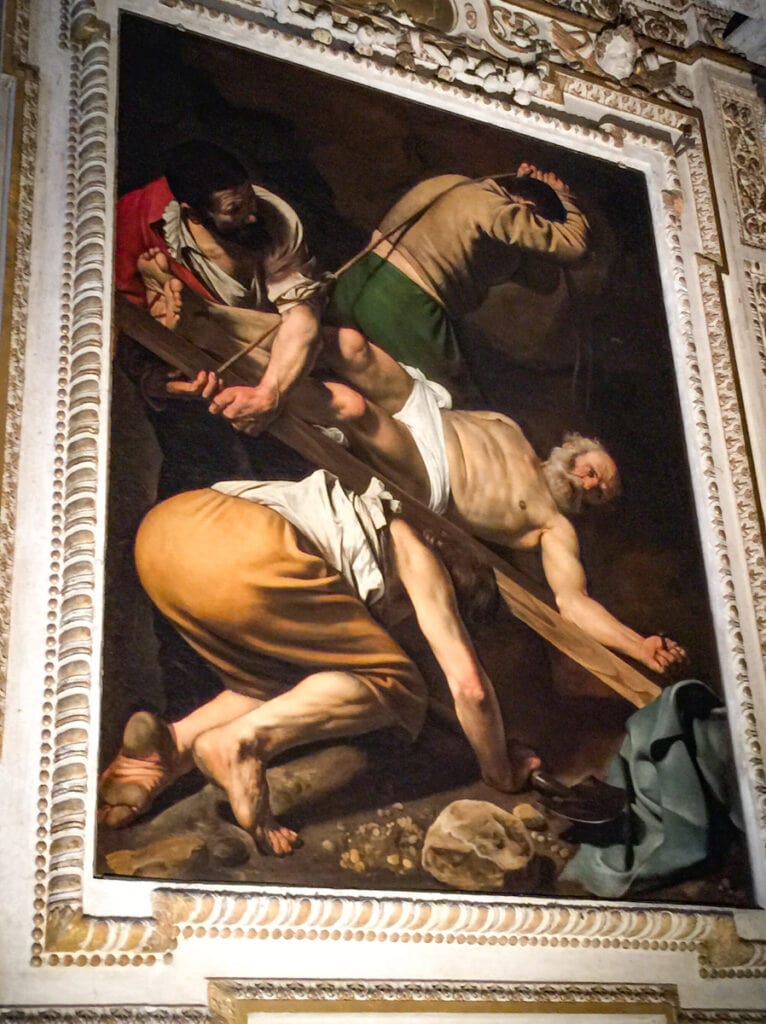
The piazza also houses an original city gate, a trio of attractive fountains, an appealing obelisk, and several churches.
From the piazza, the lively Via del Corso takes you along the historic core of the city.
Be sure to stop by Fatamorgana Corso for some artisanal gelato!
Admire the Spanish Steps
The Spanish Steps in Rome are a must-visit on your 3 days in Rome.
There are 135 picturesque steps.
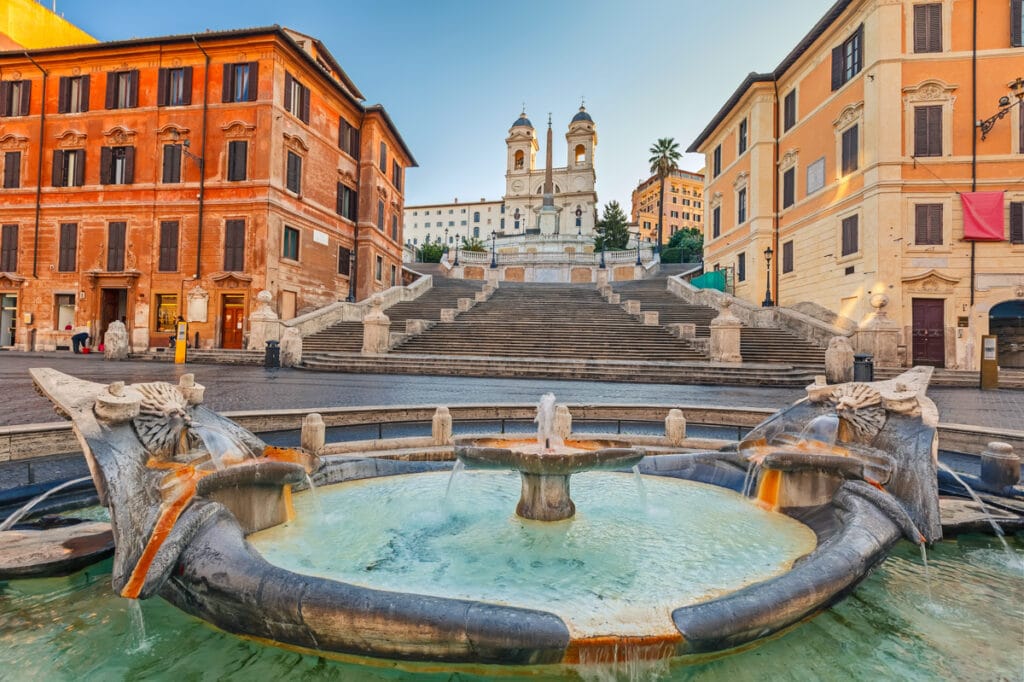
The Church of Trinita dei Monti is located at the top of the steps, and at the base is the Fountain of the Old Boat, inspired by the Tiber flood that occurred in 1598.
During the 18th and 19th centuries, the rich and powerful tended to gather at the site. Today the steps are thronged by tourists, flower sellers, and cafes.
If you enjoy browsing upscale stores, the Via dei Condotti leads from the square at the bottom of the steps.
Toss a Coin into the Trevi Fountain
In a city packed with fabulous fountains, the Fontana di Trevi stands out as the most famous.
Dating back to the 18th century, the fountain is the biggest in Rome.
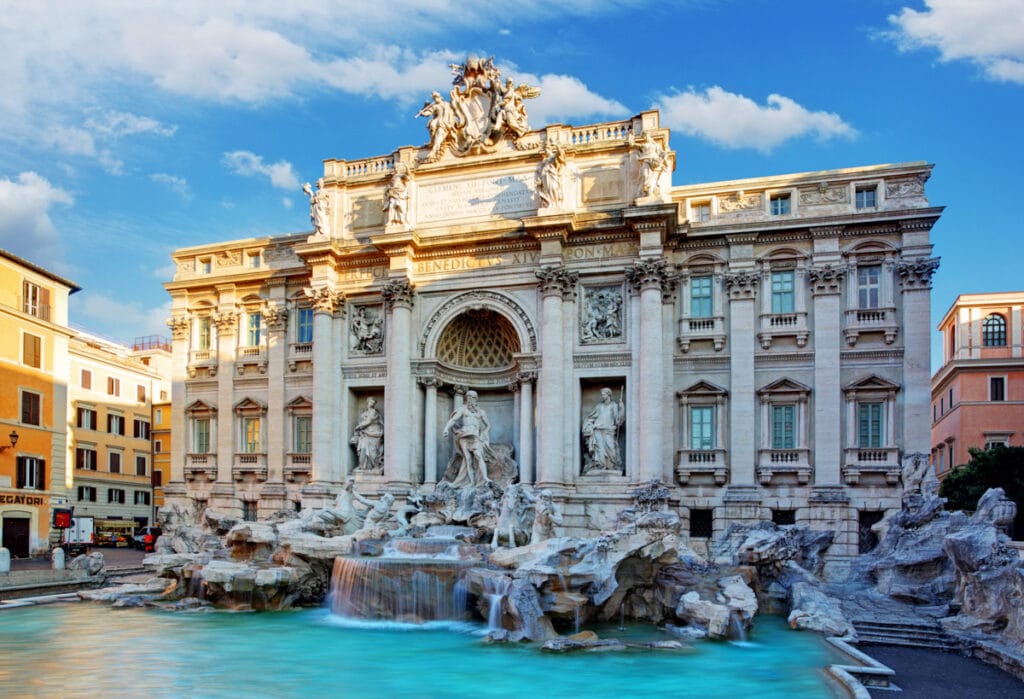
The late Baroque fountain sits atop an ancient Roman aqueduct, and you’ll likely see it more than once as you walk through the center.
Dramatically backed by the Palazzo Poli, the fountain is illuminated at night, when the contrast between the blue water and white marble is breathtaking.
Toss a coin into the fountain to ensure your return to the Eternal City!
Visit the Pantheon
The mighty Pantheon is one of the finest examples of a Roman temple to be found anywhere.
The world’s biggest unreinforced concrete dome, the Pantheon is a feat of engineering, considering it is more than 2,000 years old.
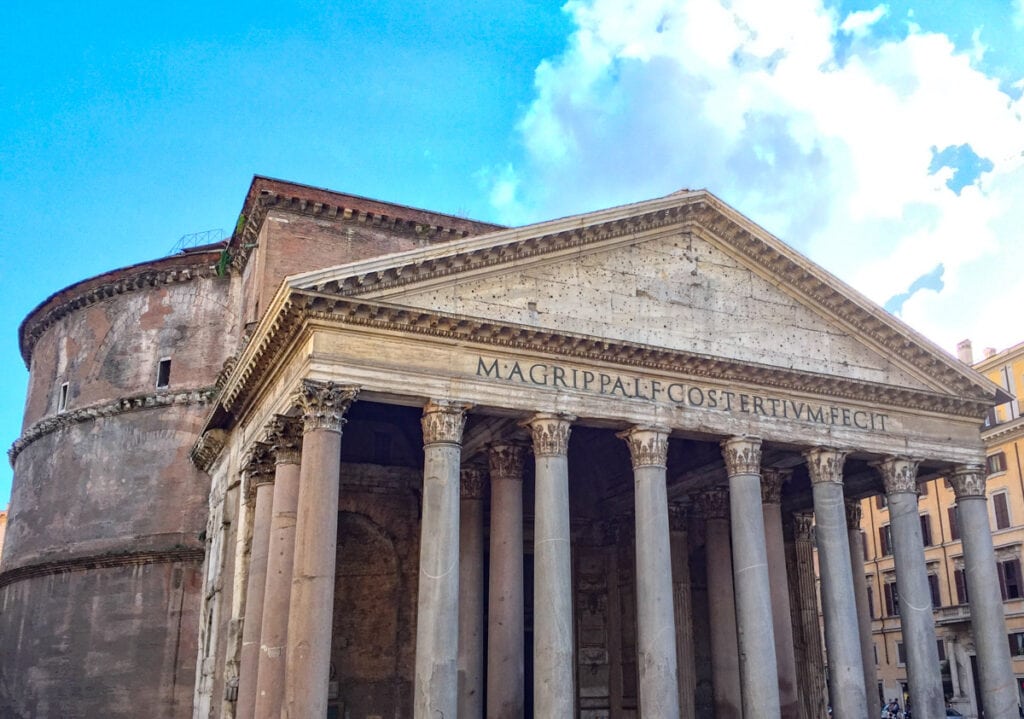
It is remarkably well preserved too, making a visit to the Pantheon one of the must-dos in your 3 days in Rome.
Since 609 A.D., the Pantheon has been a Catholic church.
Inside the rotonda, look up at the oculus (the only source of light!), admire the coffered cupola and the fluted columns, and take in the rich colors of the marble.
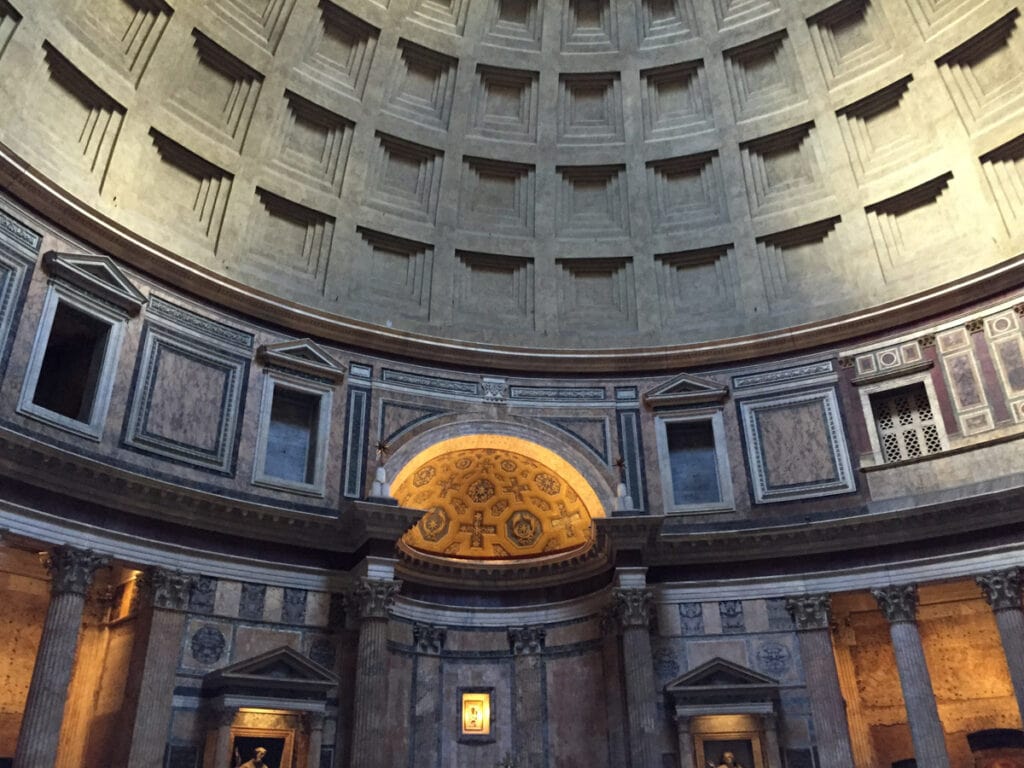
There is now a fee to visit the Pantheon. You can buy your ticket online at GetYourGuide. It offers fast track entry and comes with an audioguide.
You can also fast track buy tickets online (with an audioguide) at Tiqets.
You can also book a guided tour: this 45-minute tour is offered several times a day, but does not include the entry ticket as of the time of writing.
Enjoy the Ambience at the Piazza Navona
Even in a city replete with attractive squares, Piazza Navona stands out.
The large piazza is one of the world’s most important Baroque squares, and home to several artistic masterpieces.
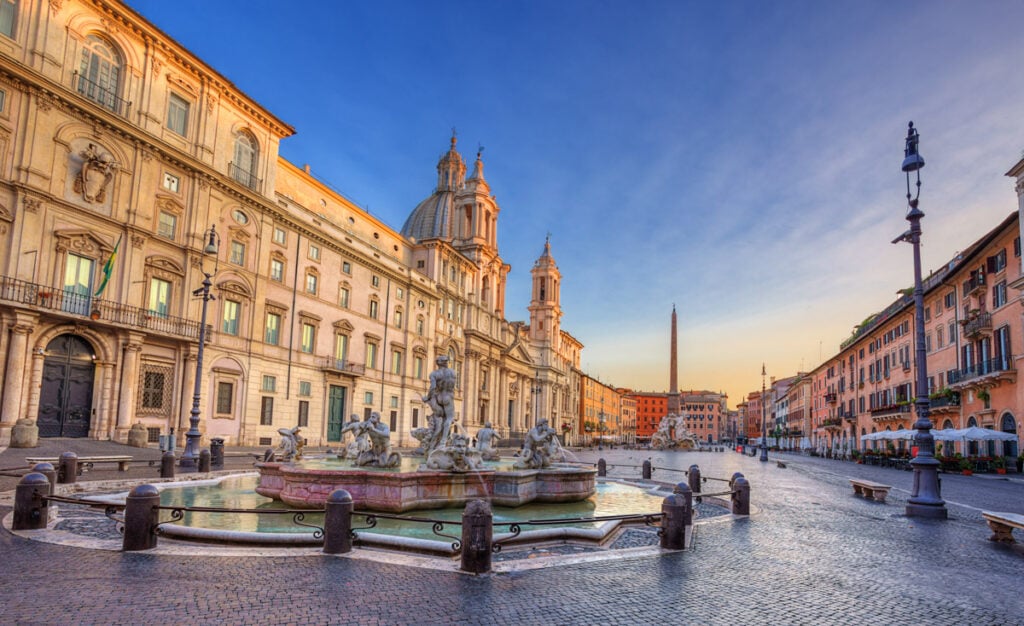
You can admire three famous Roman fountains within Piazza Navona.
At the center is Bernini’s famous Fountain of the Four Rivers, created in the mid 17th century. It is flanked by two smaller fountains.
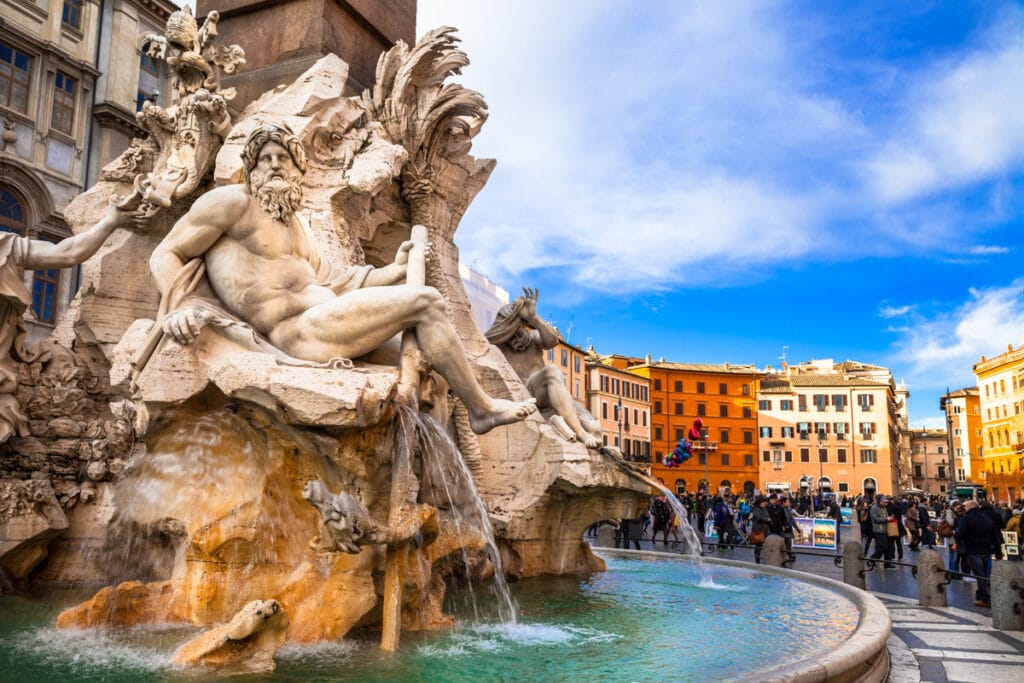
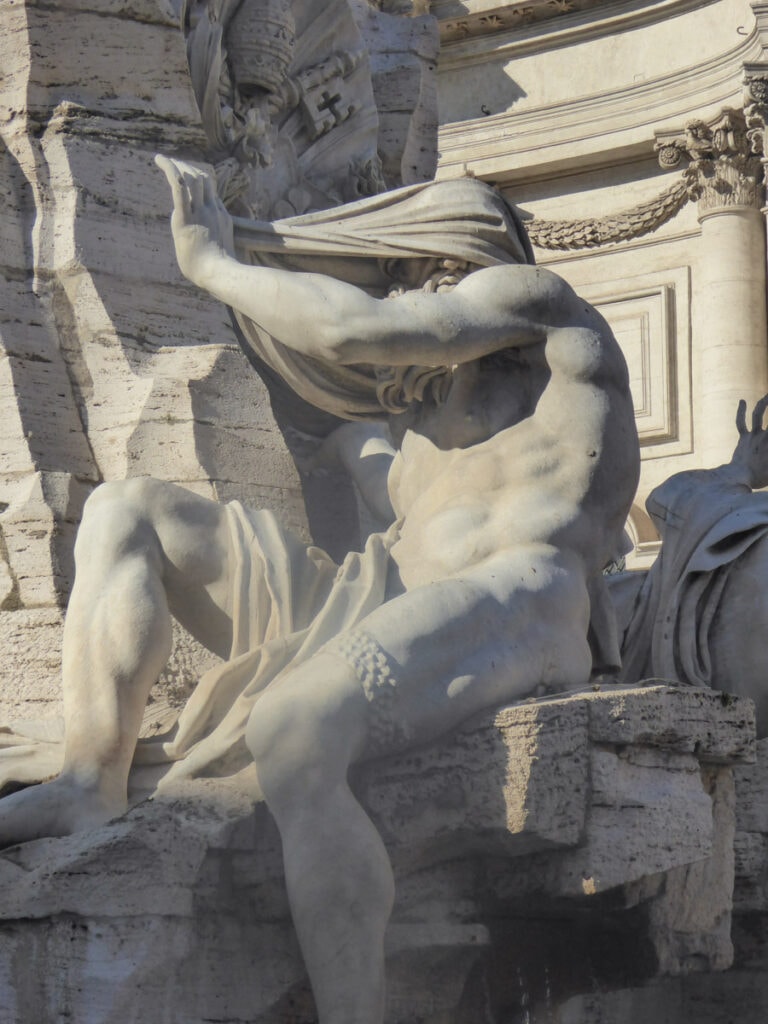
The oval square also boasts the Obelisk of Domitian and the Church of Sant’Agnese in Agone.
Piazza Navona is a lively place, with both locals and visitors enjoying the beauty of the square through the day and into the evening.
The monuments and fountains are lit at night, making for an even more electrifying ambience.
The square is a wonderful place to end your walk through the historic heart of Rome!
Enjoy Drinks and Dinner
Enjoy drinks this evening at a rooftop bar. The Singer Palace Hotel offers aperitifs with excellent views.
Or take a stroll to the Spanish Steps, where you will find Terrazza Cielo, for cocktails and views.
And tonight, enjoy a special meal in Rome!
Near the Singer Palace Hotel is Da Armando Al Pantheon, located right near the Pantheon. They offer local cuisine and are especially famous for their pastas.
They have become well-known since being mentioned on the Stanley Tucci show. Reserve in advance.
About a 10-minute walk from the Cielo Terrace, Baccano is another restaurant in the historic center famous for their pastas, and their wine list is good. Book well in advance!
Day 3 of Your 3 Days in Rome
As we’ve described the itinerary, you’ll spend your final morning in Rome exploring the historic Appian Way.
But if you love art and architecture, you could also spend this morning discovering more treasures in the historic center. On one trip, we spent a few hours admiring the interiors of many superb churches, and the art masterpieces they house.
In the afternoon, you’ll visit the Borghese Gallery, one of Rome’s top museums, and explore the Villa Borghese gardens.
Discover the Appian Way (and the Catacombs!)
Rome’s Appian Way is one of the city’s most significant historical roads.
This Roman road was a major access point, and was also used for transporting military supplies.
The road once ran for around 400 miles between Rome and Brindisi, and the old, cobbled remains can be seen just beyond the city walls.
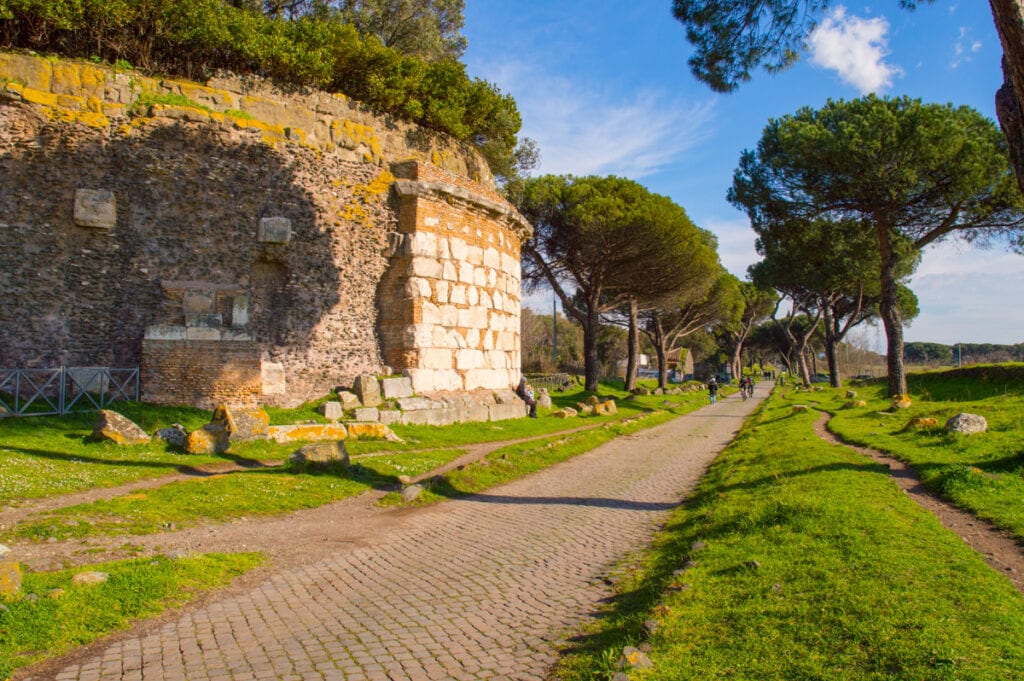
The first ten miles of the Via Appia Antica are now a park, the Parco dell’Appia Antica, and you can walk, or bike, this length and back.
A pair of Christian catacombs provides another reason to visit the Appian Way. They comprise miles of underground tunnels, where Christians were once buried en masse.
On this popular e-bike tour, explore the Appian Way and the Roman aqueducts, and take a guided tour of the catacombs of St. Callixtus or St. Sebastian.
>> Check price and availability on this guided tour of the Appian Way and the catacombs!
You can also just visit the catacombs on a guided tour, which includes transfers.
Admire the Art at the Borghese Gallery
The Borghese Gallery definitely deserves a spot on your 3 days in Rome itinerary!
The art is topnotch, but the experience is also superb, because the number of visitors is limited at any given time.
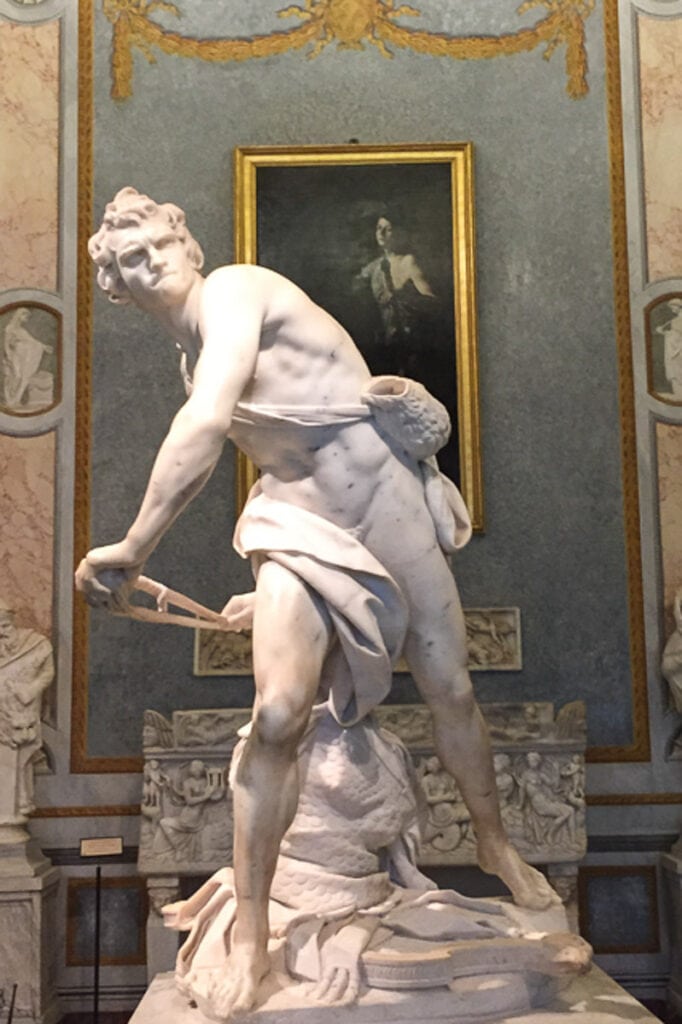
Inside, you’ll see a wealth of sculptures, paintings, and furnishings, mainly from the Renaissance and Baroque era. Some of the artists whose work is represented here are Rubens, da Vinci, and Caravaggio.
But the gallery is especially famous as the home of a half dozen of Gian Lorenzo Bernini’s masterpieces, including Pluto and Persephone, Apollo and Daphne, and David.
Caravaggio is also well represented: you’ll see his John the Baptist, Boy with a Basket of Fruit and Young Sick Bacchus here.
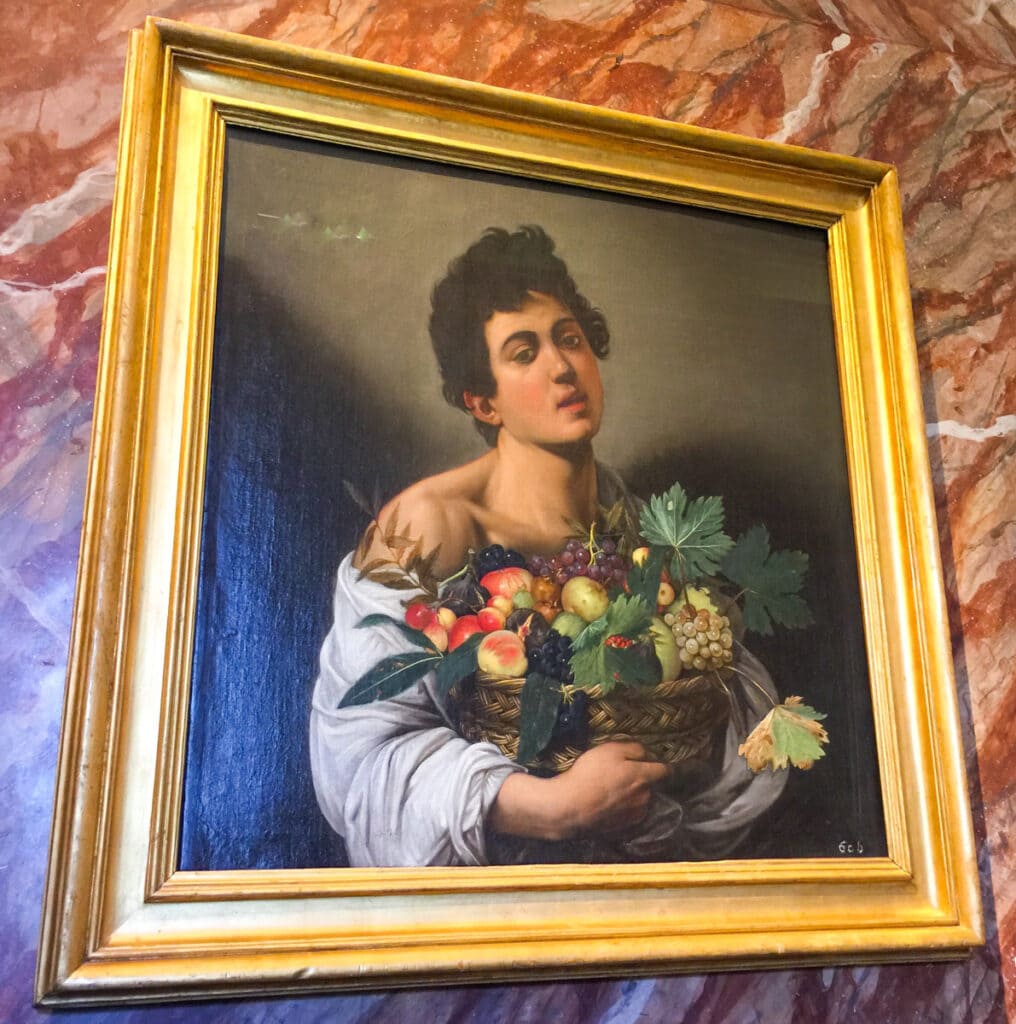
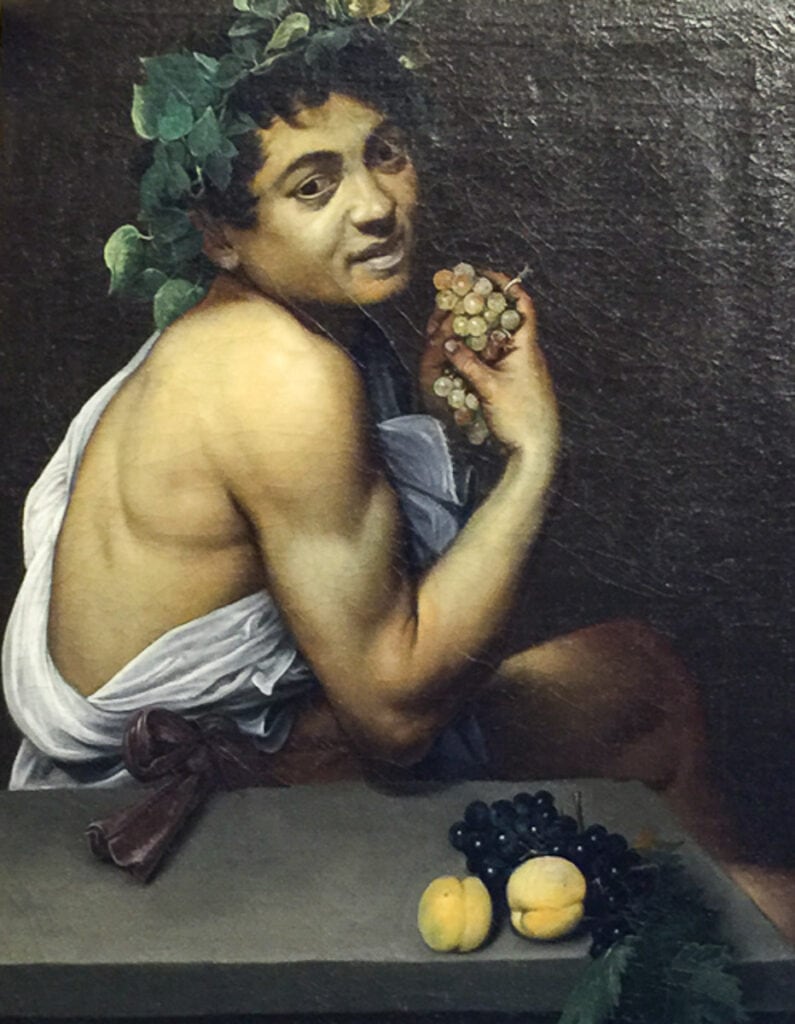
And the villa itself is a gorgeous setting for the art.
The Borghese Gallery and Villa Borghese Gardens were once one integral site, but now they form two separate attractions in Rome.
To visit, you have to get tickets in advance, which gives you a time slot. You can also, of course, opt for a guided tour.
Stroll the Villa Borghese Gardens
The landscaped gardens at Villa Borghese are laid out on Pincian Hill. These glorious gardens belong on any Rome itinerary: a stroll here is one of the best free things to do in Rome.
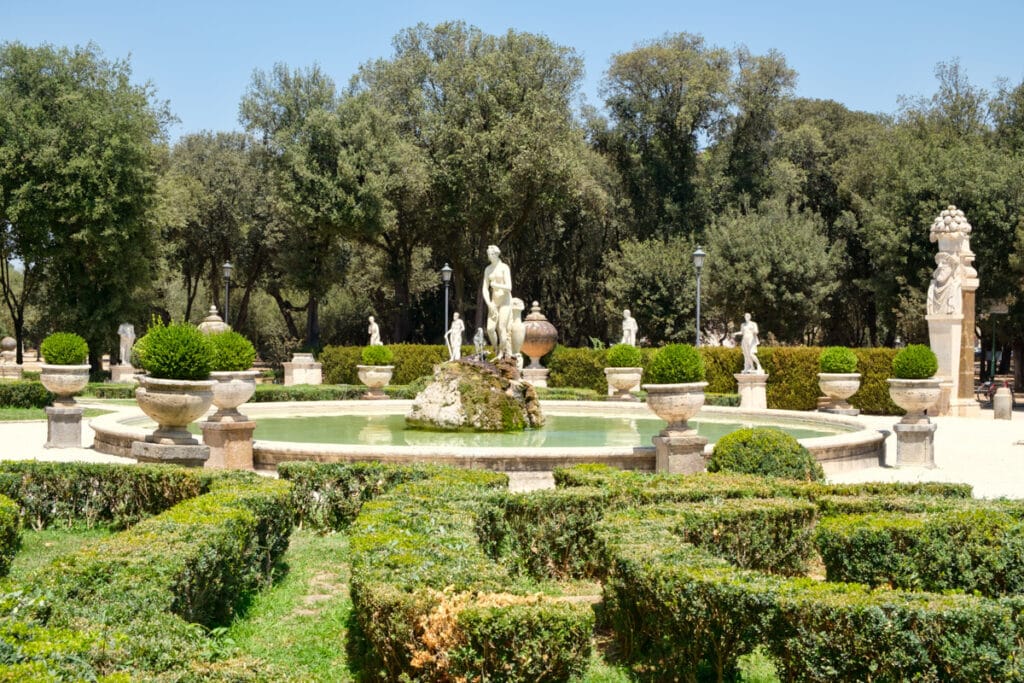
The park is open daily between dawn and dusk.
Most visitors spend at least a couple of hours at the Villa Borghese Gardens, but you could easily explore for the morning or afternoon, or even a full day, if you had the time.
There are several Roman villas and museums in the gardens – as well as the Borghese Gallery – plus some other points of interest, including a replica of Shakespeare’s Globe and the Water Clock.
Be sure to take in the views over the Piazza del Popolo from the Pincio Terrace.
Enjoy Sunset at Gianicolo Terrace
Watching the sun sink down on the horizon as the day draws to a close is one of the things you must do when in Rome.
Though Gianicolo or Janiculum Hill is not one of the city’s famous seven hills, and is a little outside the center, it’s an unparalleled spot for seeing the colorful spectacle of an Italian sunset.
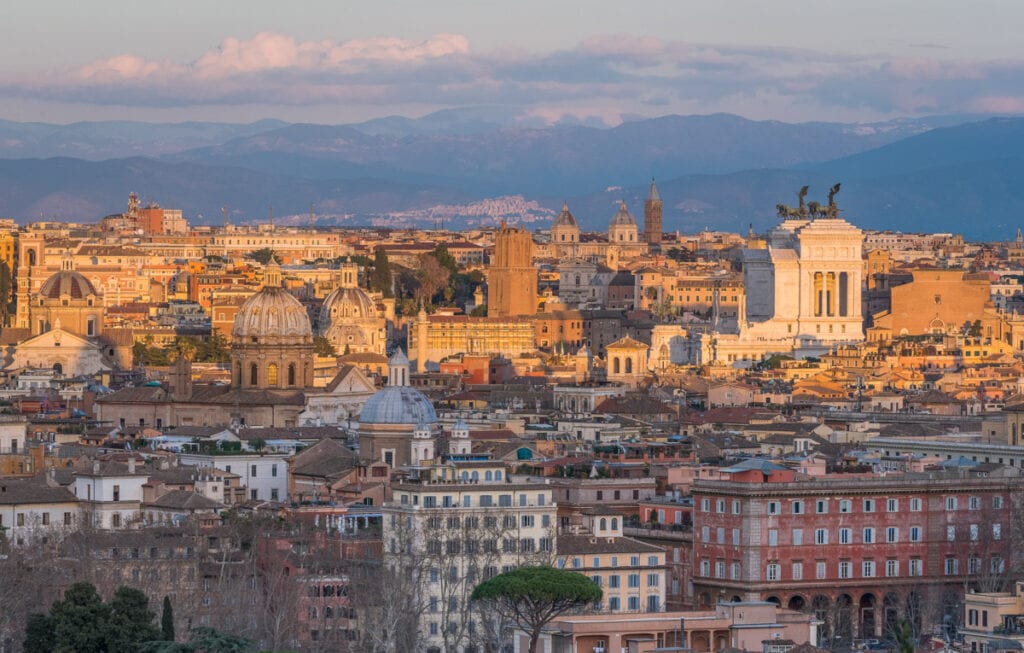
Enjoy incomparable views of famous Roman landmarks such as the Colosseum and St. Peter’s Basilica from the terrace.
Along the walk, be sure to stop at the lovely Church of San Pietro in Montorio. Here you will also find Bramante’s beautiful Tempietto.
You’ll also see the monumental Fontana dell’Acqua Paola near the church.
With More Time in Rome…
If you are fortunate enough to have more than 3 days in Rome, there are so many more things to see and do in the Eternal City!
Or, you can swap in one or more of these experiences for something we’ve included in our day-by-day 3-day Rome itinerary above. Many visitors enjoy taking a break from sightseeing to join a cooking class or shop or just relax at a rooftop bar.
And if you are spending 5 or 6 days in the city, consider taking some day trips from Rome to explore more.
This day tour of Tuscany is extremely popular, as is this guided day trip to Pompeii and the Amalfi Coast, and Orvieto, just an hour away by train, is another fun day trip.
Gawk at the art in Rome’s churches (for free!)
You can’t go a couple of blocks in Rome’s historic center without coming across a church (or three!).
And many of Rome’s 900 or so churches offer exceptional architecture and art, for free.
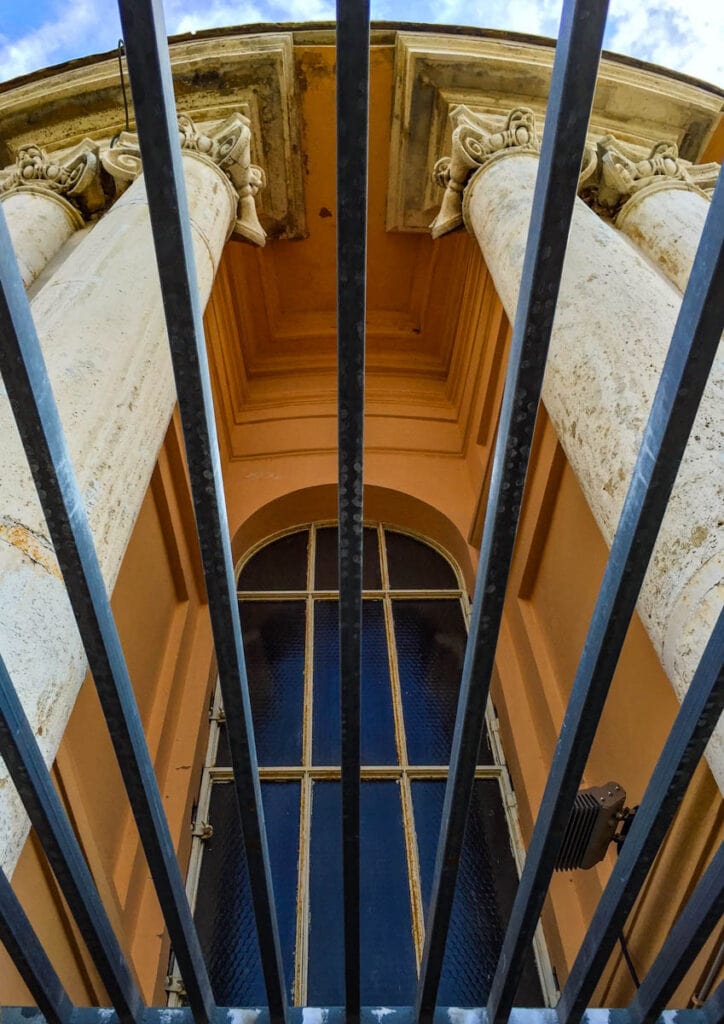
Here are some churches to put on your Rome itinerary, in addition to the Basilica di San Pietro and the Pantheon:
The Basilica di Santa Maria Maggiore is one of the oldest churches in Rome. It features a gilded coffered ceiling and mosaics from the 5th century.
The Basilica di San Giovanni in Laterano is actually Rome’s cathedral. It has a majestic facade and its interior is spectacular. The baptistery here dates back to the 4th century!
Santa Maria Sopra Minerva is Rome’s only Gothic church. It houses the tomb of St. Catherine and is famous for its deep blue vaulted ceiling. In front of the church is Bernini’s “Elephant and Obelisk” statue.
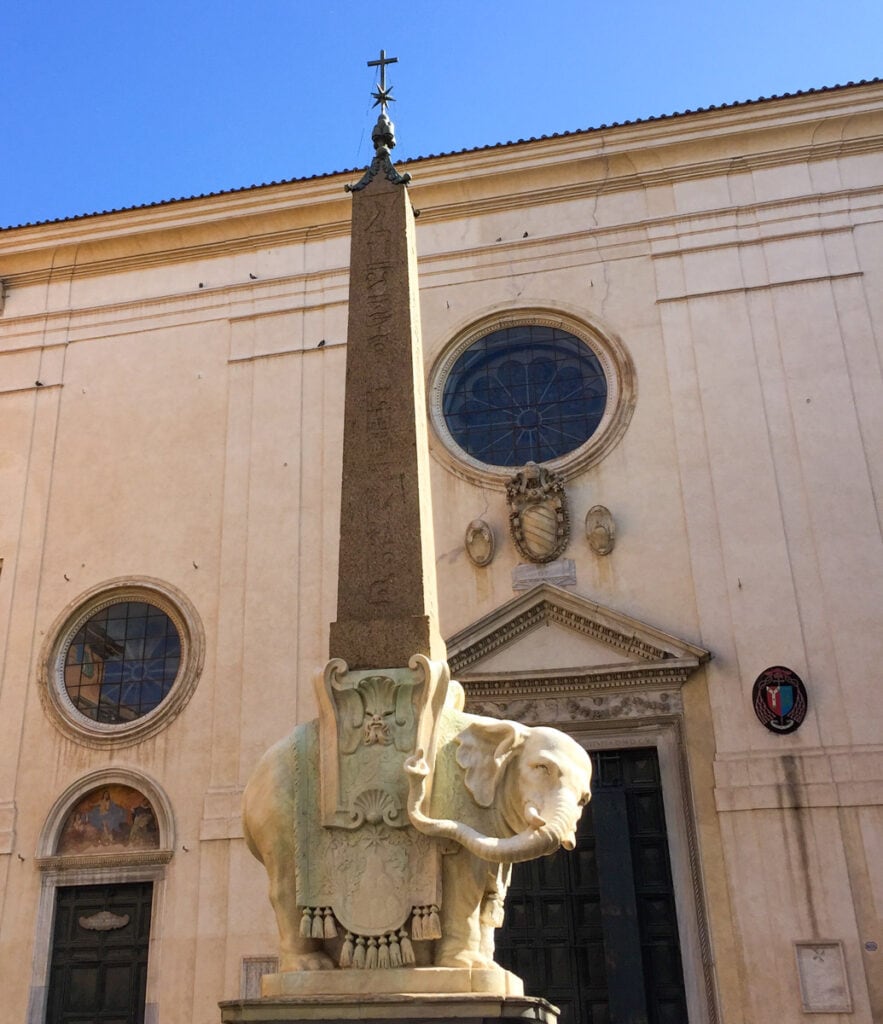
Santa Maria della Vittoria is a must-visit for its Comaro Chapel, which holds Gian Lorenzo Bernini’s famous sculptural group, L’Estasi di Santa Teresa.
The Chiesa di Sant’Ignazio di Loyola features a gorgeous ceiling with frescoes. The “dome” is cleverly painted by Andrea Pozzo on a flat ceiling!
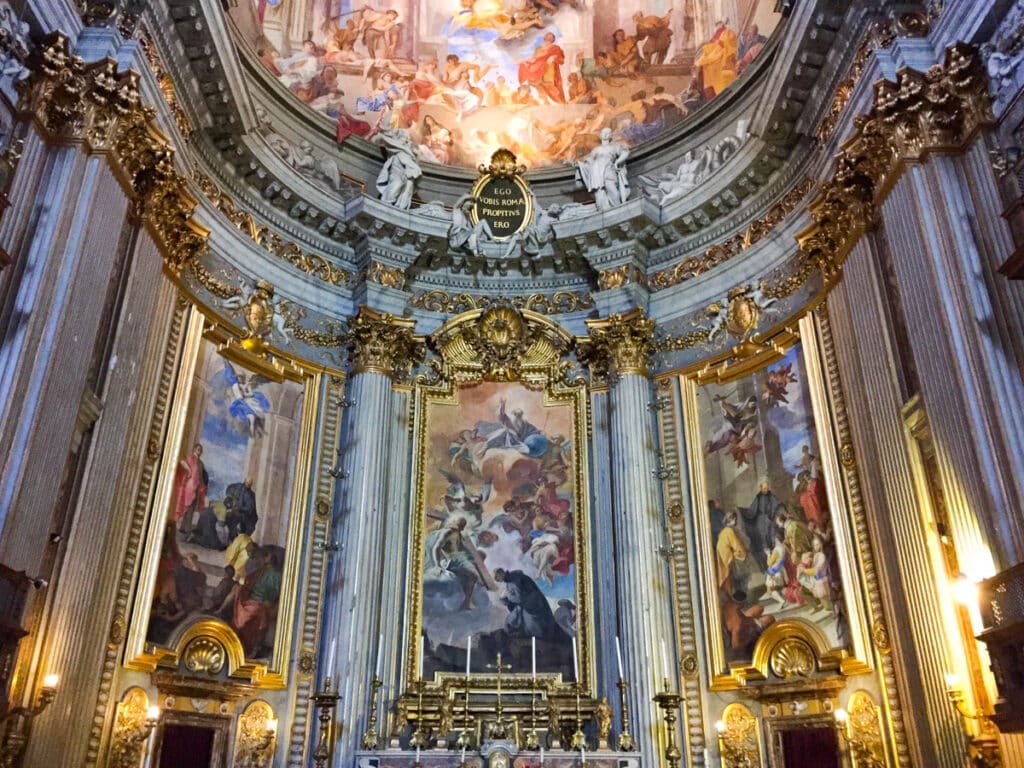
The Basilica of Santa Maria del Popolo features numerous art treasures, by masters such as Caravaggio, Pinturicchio, Bernini, and Raphael.
The Basilica of Santa Maria in Trastevere is one of Rome’s oldest churches and the first dedicated to the Virgin. It is home to beautiful mosaics and a gilded ceiling.
Stop by the Mouth of Truth
The Mouth of Truth, or Bocca della Verità, is a mask made of marble located on the wall of the Church of Santa Maria in Cosmedin.
It’s about a 15-minute walk from the Colosseum.
Legend has it that a liar that places a hand inside the Mouth of Truth will have it bitten off.
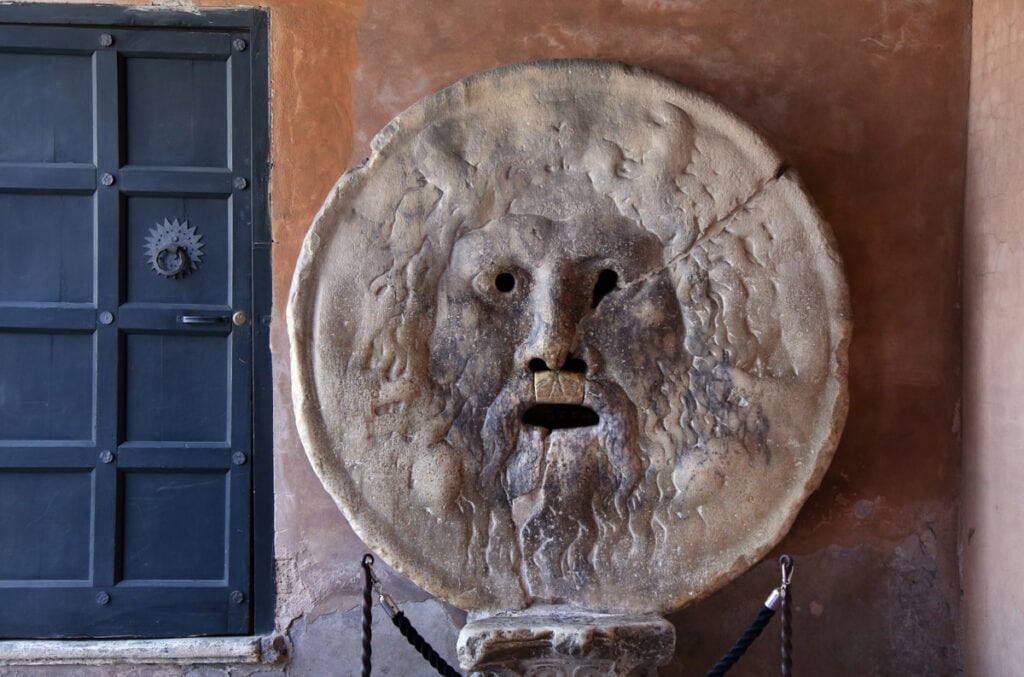
The sculpture is large, with a diameter of almost 6 feet, and is said to be that of Oceanus, the God of the Sea, with holes for the eyes, nose, and, of course, mouth.
Pose for a photo with your hand inside the Mouth of Truth!
Visit the Baths of Caracella
Just a short walk from the Colosseum, you can see the remains of what used to be the city’s second-largest public baths, the Baths of Caracalla.
Built in the early third century, they likely stayed in use until the sixth century after which they fell into ruins.
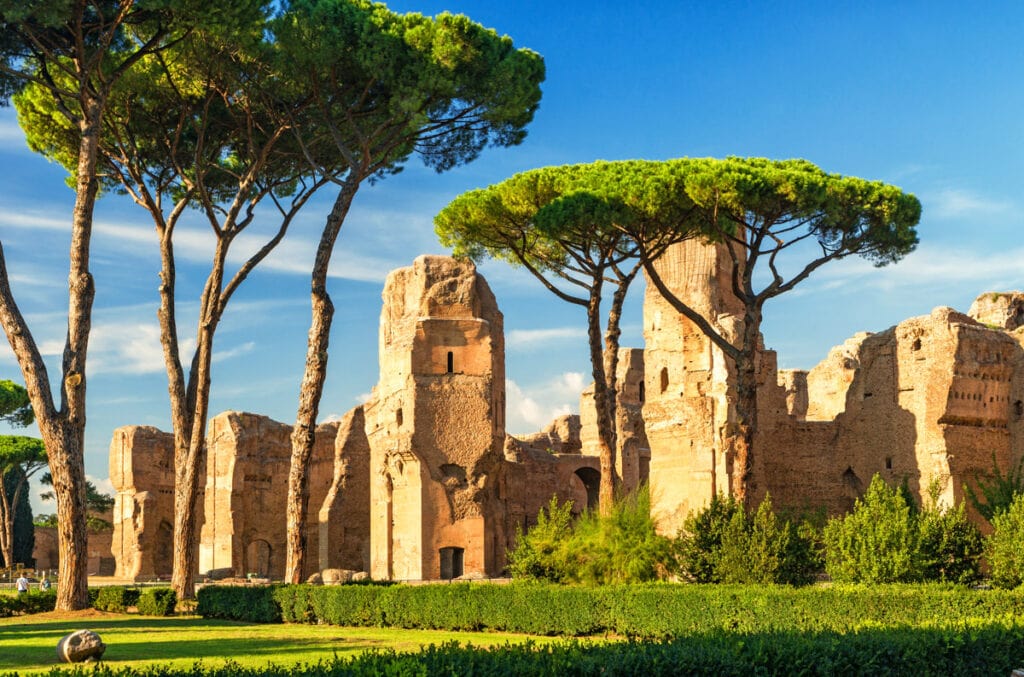
Famous works of art have been recovered from the site, including the Farnese Hercules and the Farnese Bull, both now housed at the Museo Archeologico Nazionale in Naples.
Some of the mosaics recovered from the site are on display at the Vatican Museums.
Today you can visit the baths to admire the many mosaic-covered floors, and see the different rooms.
There is an entrance fee.
Stroll the Campo de’ Fiori Market
The Campo de’ Fiori market makes for a nice stroll on any morning other than Sunday mornings.
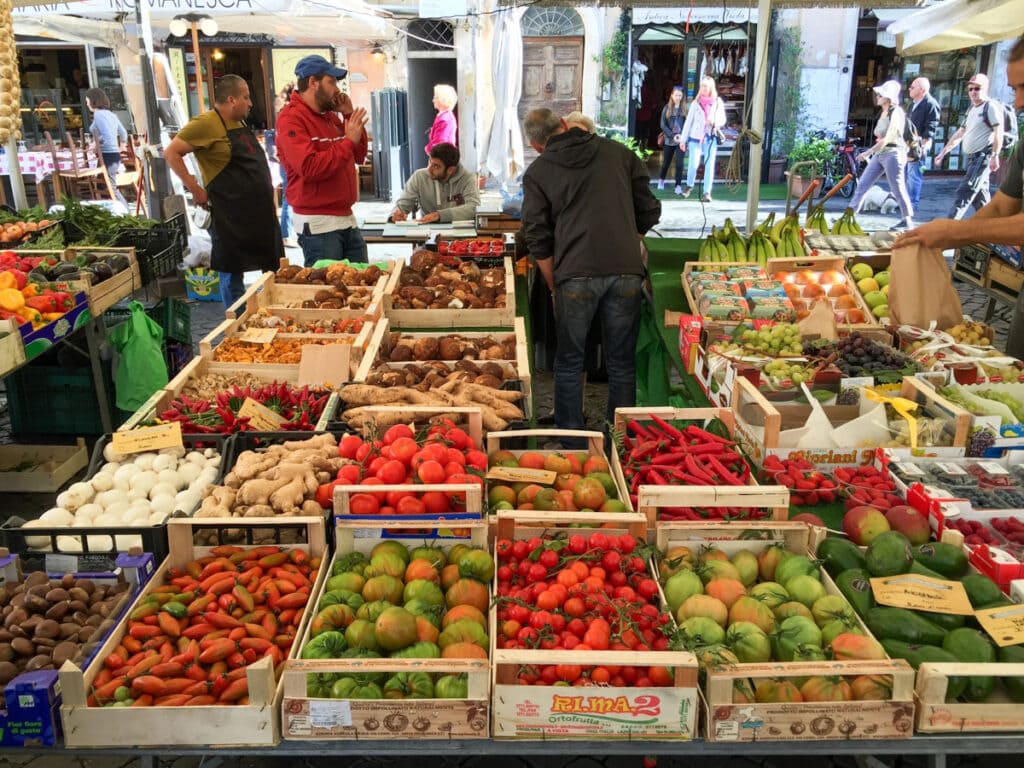
The market features lots of stands with colorful fruit, vegetables, and fresh flowers and plants. You’ll also find meats, cheeses, olive oils, and other foods.
In the evening, the area bustles with bars and eateries.
If you take this late morning street food tour, you can tour the market in the company of your guide before heading to the Jewish Ghetto.
Walk the Jewish Ghetto
Rome’s Jewish Ghetto dates back to the mid 16th century. Jews were forced to reside here, and restrictions were imposed on them.
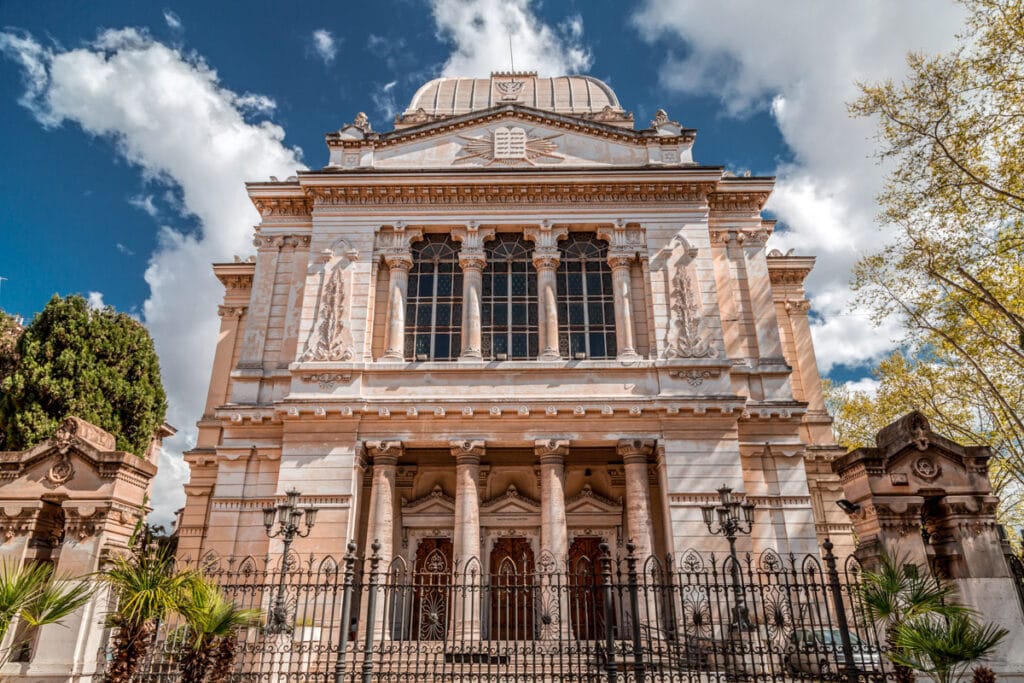
During WWII, the Nazis captured many of the Jews living here and transported them to Auschwitz.
Today you can tour this small neighborhood, which features many wonderful eateries. Visit the Synagogue or Tempio Maggiore, and snap a photo of the Turtle Fountain!
This highly-rated food walking tour is a great way to visit the Jewish Quarter.
Join a cooking class
Take a few hours off from sightseeing and learn how to cook pasta and tiramisu in Rome!
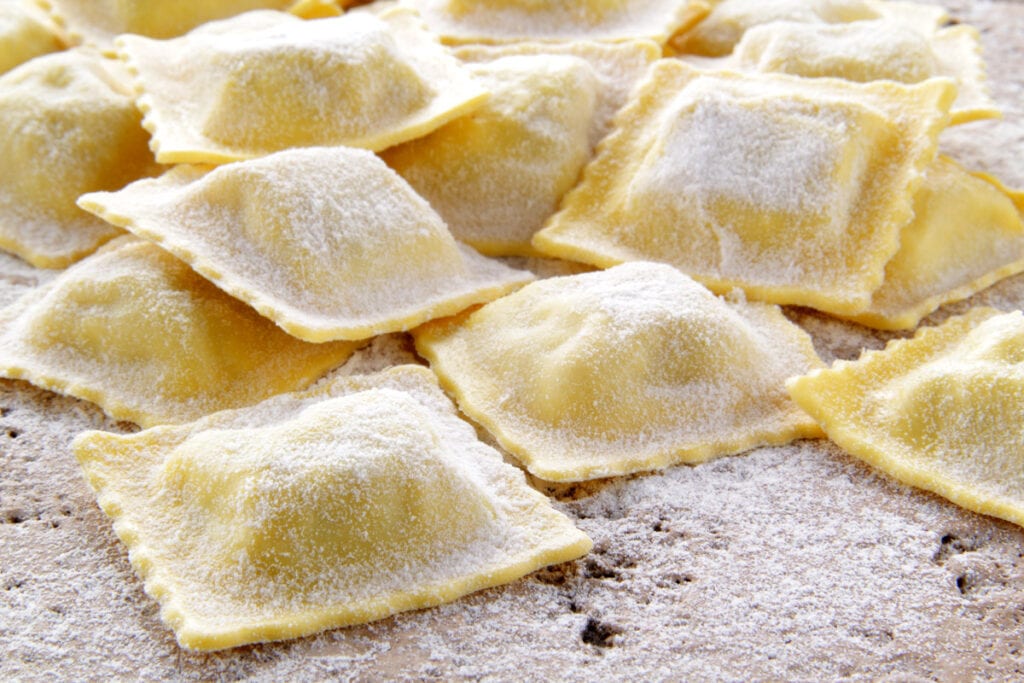
Conveniently sited in a restaurant kitchen at the Piazza Navona, this highly-rated 3-hour class is led by a chef. You’ll learn how to make fettucine, ravioli, and tiramisu from scratch.
Then you’ll sit down with a glass of wine and eat what you’ve prepared, in the company of other participants and end the session with a glass of limoncello.
>> Check price and availability for this Rome pasta and tiramisu cooking class now!
Shop!
Whether you enjoy window shopping or you want to actually shop, Rome’s shopping streets are enticing.
Via dei Condotti is the place to go for upscale brands, from Gucci and Dior to Tiffany and Cartier. The street is great for strolling any time of the year, but especially so at Christmas.
Via del Corso has numerous stores, and you’ll find the likes of Zara and H&M here.
Getting to Rome
Arriving by Air
If you plan to fly into the city, Rome has an international airport, called Fiumicino or Leonardo da Vinci Airport, located 25 kilometers (about 16 miles) southwest of the city center.
To get to the city center from the airport, you have several options.
You can opt for a private transfer, which comes with an English-speaking driver and a guaranteed price.
You can also take a fixed-rate taxicab, but be sure to only take a licensed City of Rome cab from the ranks outside Terminals 1 and 3. You’ll see signs for the taxi ranks in the arrivals area of the airport.
There is a train service, the Leonardo Express, that brings you from the airport to the Roma Termini railway station. The journey is about 30 minutes and trains run every 15 minutes. From Roma Termini, you can take the metro to your final stop.
Finally, there are also buses that connect from the airport to different parts of Rome.
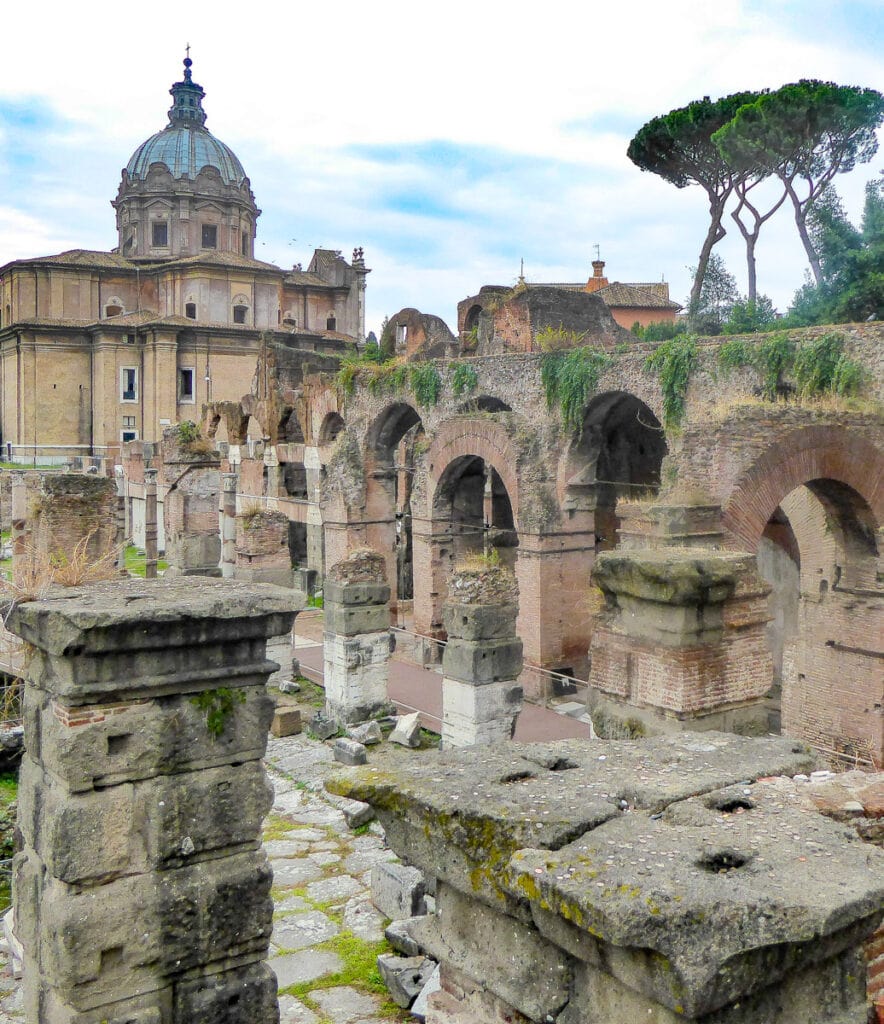
Arriving by Train
Rome is also well-connected by train with other cities in Italy and even beyond, so the high-speed train is a great option for traveling to Rome from cities like Venice, Milan, or Florence.
We use Omio to book train tickets for Europe travel. The website is in English and is easy to navigate.
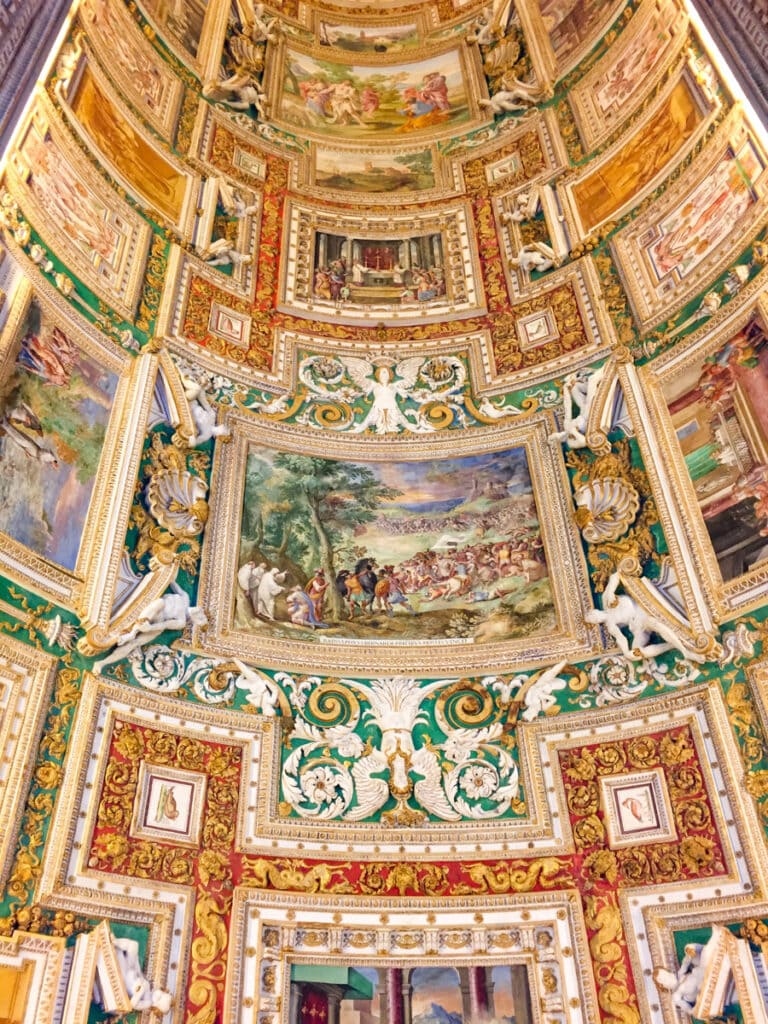
Getting Around in Rome
If you stay in the centro storico, which we suggest you do, many major sights in Rome are within walking distance.
But if you do not want to walk everywhere, Rome has an excellent public transport system.
You can also opt for Hop On, Hop Off bus tours.
The popular Big Bus Hop On, Hop Off tour comes with a 24-hour, 48-hour, or 72-hour validity.
The Panoramic Open Bus comes with a validity of 1-3 days.
Both tours offer audio commentary and onboard wifi, and feature a number of circuits and stops.
In terms of public transport, you have the bus, metro, tram, and urban rail. The metro and the bus are what you’ll likely use.
The metro is very convenient because there are stops near many major sights, and buses cover more areas.
We do not advise taking taxis if you can avoid them.
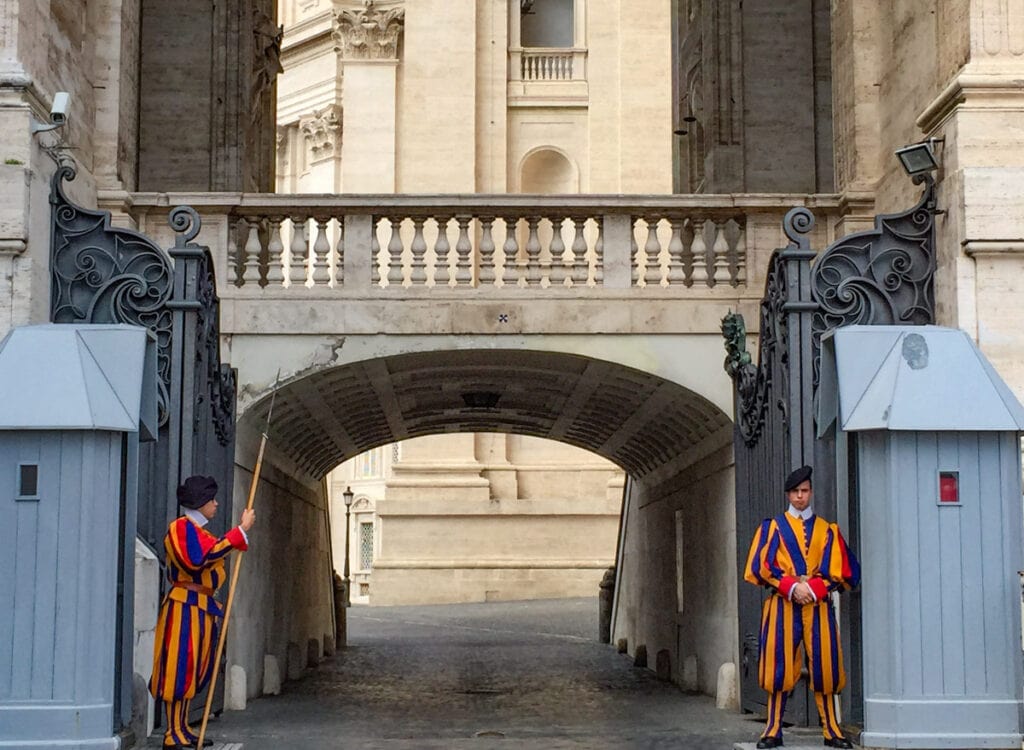
Where to Stay in Rome
Hotels in the Historic Center of Rome
Singer Palace Hotel is located on the Via del Corso just a short distance from the Trevi Fountain. The hotel has a rooftop terrace and an onsite restaurant. Rooms are elegantly furnished.
>> Check rates and availability now!
NH Collection Roma Fori Imperiali is located in the heart of Rome and overlooks the Roman Forum. The hotel offers a rooftop terrace bar and onsite dining.
Rooms feature contemporary furnishings and most rooms offer views over the Forum.
>> Check rates and availability now!
Terrace Pantheon Relais is located close to the Pantheon and offers a panoramic terrace. Rooms are stylishly furnished and bathrooms are modern.
>> Check rates and availability now!
The Best Time to Visit Rome
Spring and fall are ideal times to visit Rome, with pleasant weather, but expect crowds and high prices on accommodations.
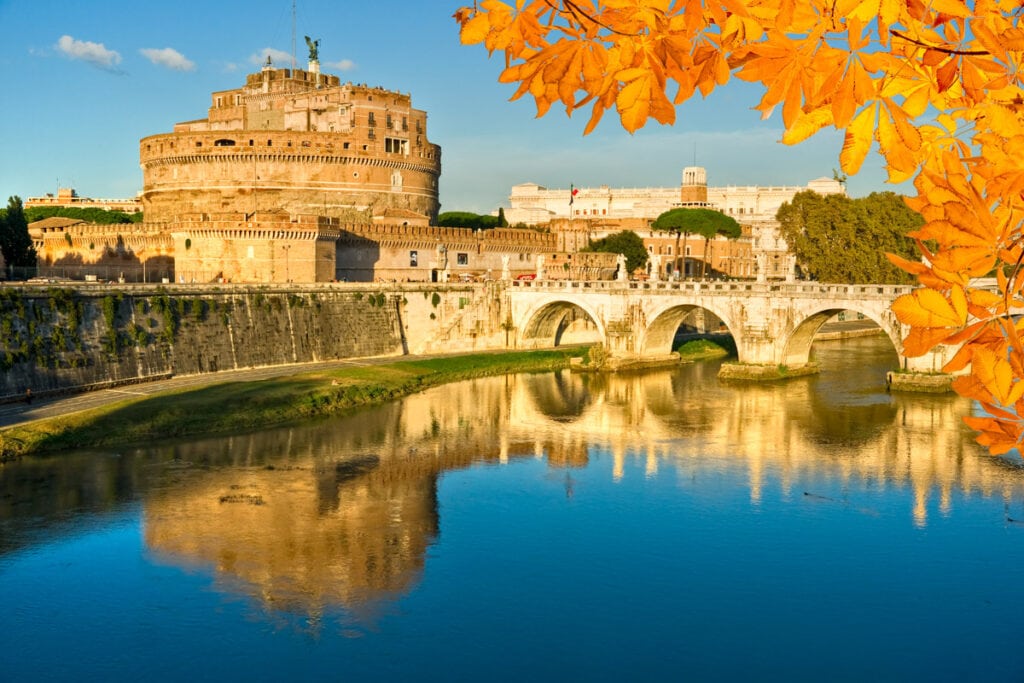
If you like to visit when crowd levels are low, you should plan your visit to Rome in winter. Yes, you’ll need layers, and sights can have shortened hours, but you will find visiting the popular sights much more stress-free.
Summers in Rome can be unpleasantly hot, with temperatures rising into the 90s Fahrenheit. You may be able to score deals on accommodations though, and most hotels offer air-conditioning.
Did you find this article informative? Pin it for later reference!
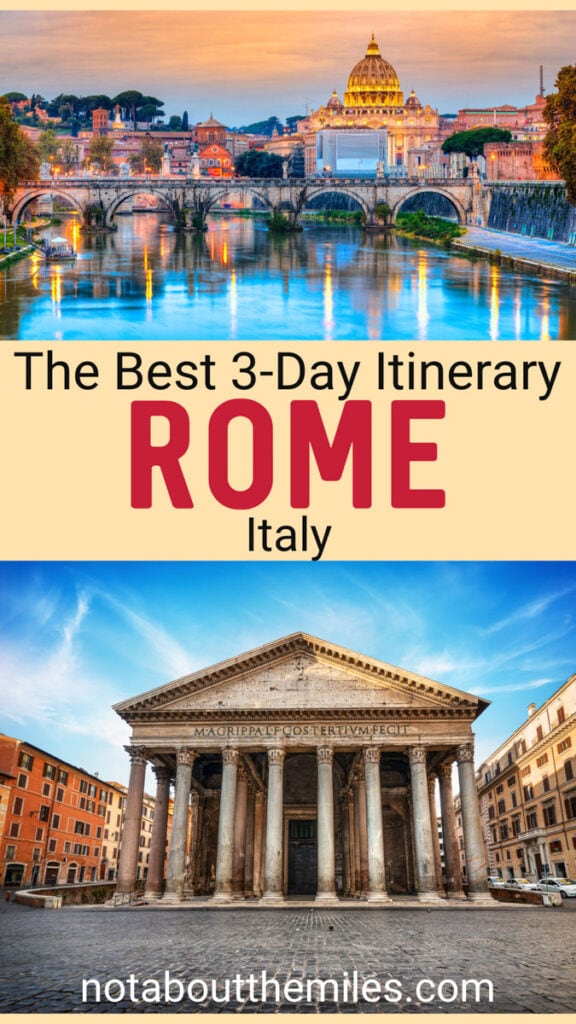

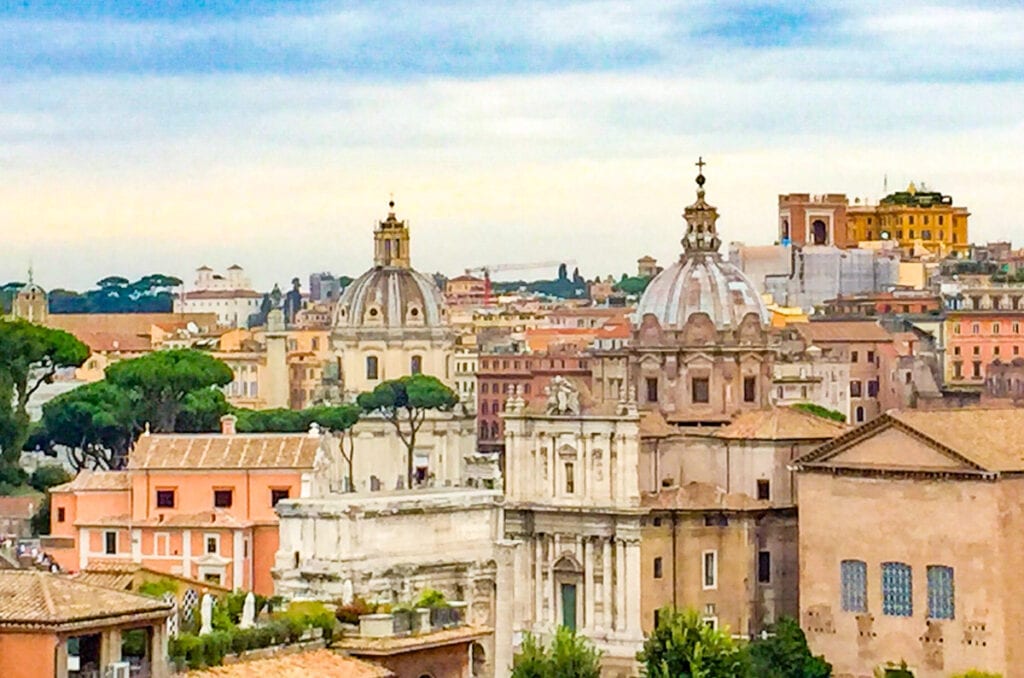
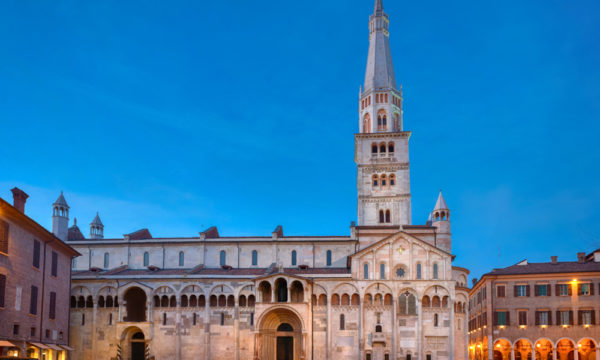
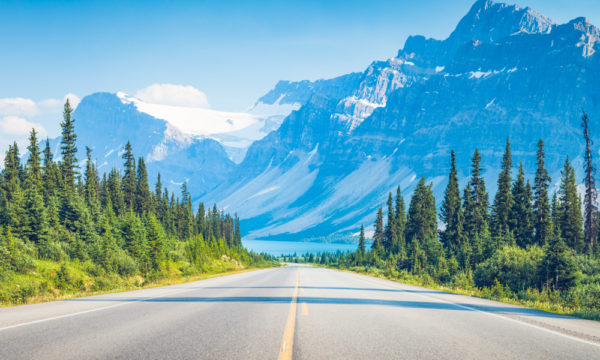
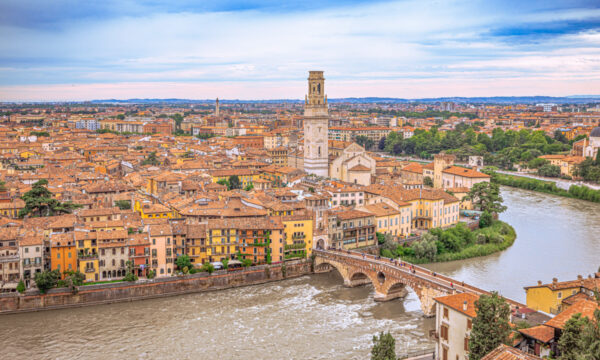
You have certainly fitted a lot of Rome into three days. All the sites are very well worth visiting. For me, after 8 visits to Rome over nearly 50 years, the Pantheon takes first prize for the ancient period of its history, getting lost in the in the Centro Storico for the Medeval period, and San Pietro & Vaticano for the Renaissance period. The bars, trattorie and ristoranti are the prize infills between the sights, where a visitor can sample Roman and Italian hospitality and life.
Can I suggest that you should use Italian names for the locations in your article, such as Piazza not Square, and Michelangelo’s famous piazza at the Capitolino is the Campidoglio.
Hi Peter, thanks so much for taking the time to read and to comment. Rome is certainly worth visiting over and over! We have noted your suggestion, thank you.